Books
04.05.17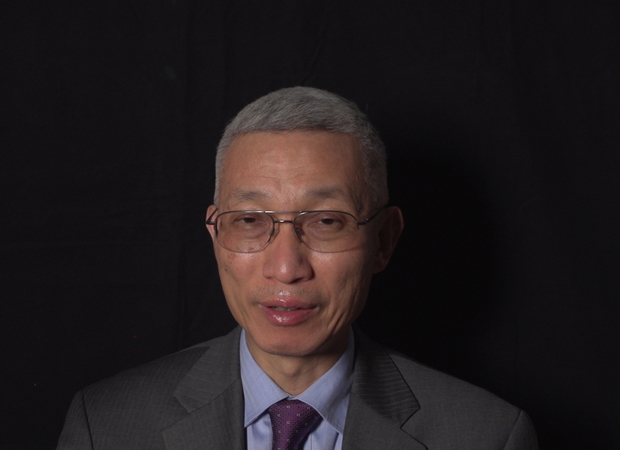
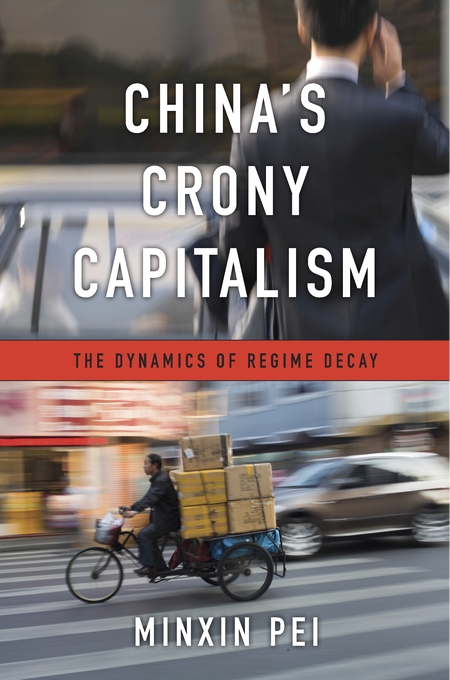
China’s Crony Capitalism
When Deng Xiaoping launched China on the path to economic reform in the late 1970s, he vowed to build “socialism with Chinese characteristics.” More than three decades later, China’s efforts to modernize have yielded something very different from the working people’s paradise Deng envisioned: an incipient kleptocracy, characterized by endemic corruption, soaring income inequality, and growing social tensions. China’s Crony Capitalism traces the origins of China’s present-day troubles to the series of incomplete reforms from the post-Tiananmen era that decentralized the control of public property without clarifying its ownership.Beginning in the 1990s, changes in the control and ownership rights of state-owned assets allowed well-connected government officials and businessmen to amass huge fortunes through the systematic looting of state-owned property—in particular land, natural resources, and assets in state-run enterprises. Mustering compelling evidence from over two hundred corruption cases involving government and law enforcement officials, private businessmen, and organized crime members, Minxin Pei shows how collusion among elites has spawned an illicit market for power inside the party-state, in which bribes and official appointments are surreptitiously but routinely traded. This system of crony capitalism has created a legacy of criminality and entrenched privilege that will make any movement toward democracy difficult and disorderly.Rejecting conventional platitudes about the resilience of Chinese Communist Party rule, Pei gathers unambiguous evidence that beneath China’s facade of ever-expanding prosperity and power lies a Leninist state in an advanced stage of decay. —Harvard University Press{chop}
Books
03.27.17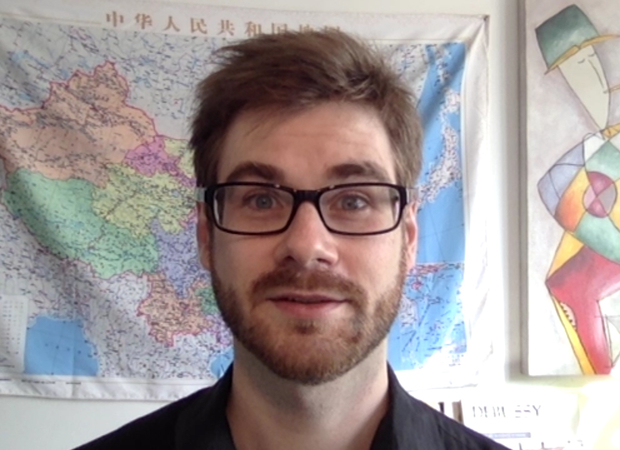
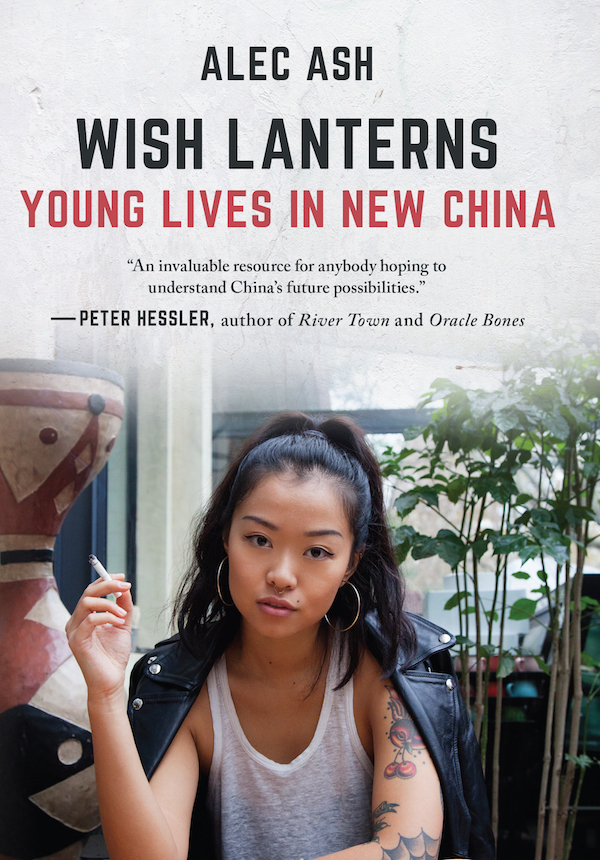
Wish Lanterns
If China will rule the world one day, who will rule China? There are more than 320 million Chinese between the ages of 16 and 30. Children of the one-child policy, born after Mao, with no memory of the Tiananmen Square massacre, they are the first net native generation to come of age in a market-driven, more international China. Their experiences and aspirations were formed in a radically different country from the one that shaped their elders, and their lives will decide the future of their nation and its place in the world.Wish Lanterns offers a deep dive into the life stories of six young Chinese. Dahai is a military child, netizen, and self-styled loser. Xiaoxiao is a hipster from the freezing north. Fred, born on the tropical southern island of Hainan, is the daughter of a Party official, while Lucifer is a would-be international rock star. Snail is a country boy and Internet-gaming addict, and Mia is a fashionista rebel from far west Xinjiang. Following them as they grow up, go to college, and find work and love, all the while navigating the pressure of their parents and society, Wish Lanterns paints a vivid portrait of Chinese youth culture and of a millennial generation whose struggles and dreams reflect the larger issues confronting China today. —Arcade Publishing{chop}
Books
03.16.17
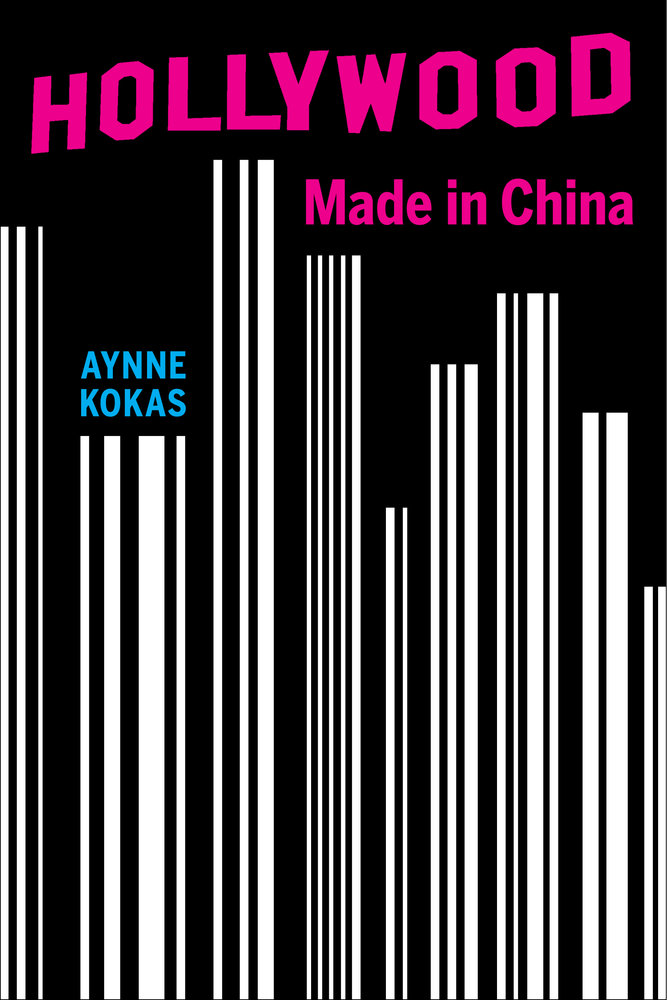
Hollywood Made in China
China’s entry into the World Trade Organization in 2001 ignited a race to capture new global media audiences. Hollywood moguls began courting Chinese investors to create entertainment on an international scale—from behemoth theme parks to blockbuster films. Hollywood Made in China examines these new collaborations, where the distinctions between Hollywood’s “dream factory” and Xi Jinping’s “Chinese Dream” of global influence become increasingly blurred. With insightful policy analysis, ethnographic research, and interviews with CEOs, directors, and film workers in Beijing, Shanghai, and Los Angeles, Aynne Kokas offers an unflinching look at China’s new role in the global media industries. A window into the partnerships with Chinese corporations that now shape Hollywood, this book will captivate anyone who consumes commercial media in the twenty-first century. —University of California Press{chop}
Books
03.13.17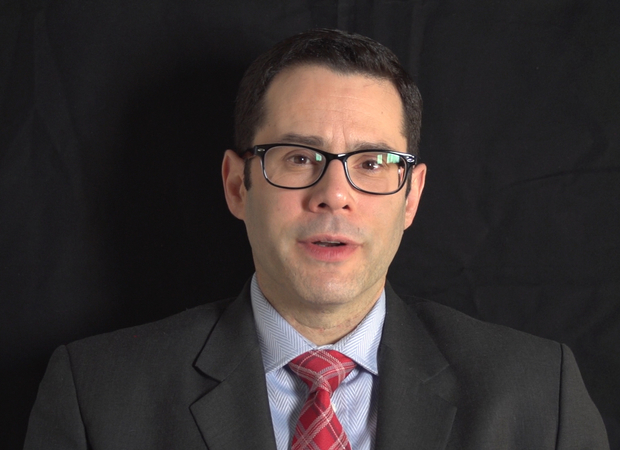
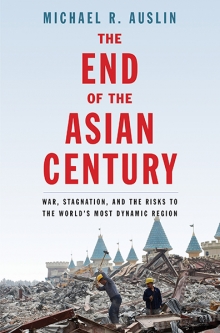
The End of the Asian Century
Since Marco Polo, the West has waited for the “Asian Century.” Today, the world believes that Century has arrived. Yet from China’s slumping economy to war clouds over the South China Sea and from environmental devastation to demographic crisis, Asia’s future is increasingly uncertain. Historian and geopolitical expert Michael Auslin argues that far from being a cohesive powerhouse, Asia is a fractured region threatened by stagnation and instability. Here, he provides a comprehensive account of the economic, military, political, and demographic risks that bedevil half of our world, arguing that Asia, working with the United States, has a unique opportunity to avert catastrophe—but only if it acts boldly. Bringing together firsthand observations and decades of research, Auslin’s provocative reassessment of Asia’s future will be a must-read for industry and investors, as well as politicians and scholars, for years to come. —Yale University Press{chop}
Books
03.08.17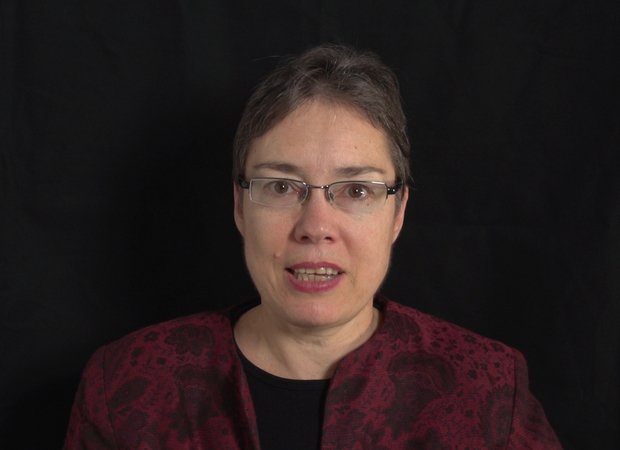
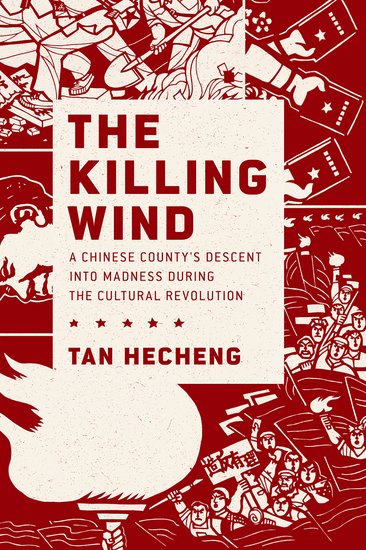
The Killing Wind
Over the course of 66 days in 1967, more than 4,000 “class enemies”—including young children and the elderly—were murdered in Daoxian, a county in China’s Hunan province. The killings spread to surrounding counties, resulting in a combined death toll of more than 9,000. Commonly known as the Daoxian massacre, the killings were one of many acts of so-called mass dictatorship and armed factional conflict that rocked China during the Cultural Revolution. However, in spite of the scope and brutality of the killings, there are few detailed accounts of mass killings in China’s countryside during the Cultural Revolution’s most tumultuous years.Years after the massacre, journalist Tan Hecheng was sent to Daoxian to report on an official investigation into the killings. Tan was prevented from publishing his findings in China, but in 2010, he published the Chinese edition of The Killing Wind in Hong Kong. Tan’s first-hand investigation of the atrocities, accumulated over the course of more than 20 years, blends his research with the recollections of survivors to provide a vivid account exploring how and why the massacre took place and describing its aftermath. Dispelling the heroic aura of class struggle, Tan reveals that most of the Daoxian massacre’s victims were hard-working, peaceful members of the rural middle class blacklisted as landlords or rich peasants. Tan also describes how political pressure and brainwashing turned ordinary people into heartless killing machines.More than a catalog of horrors, The Killing Wind is also a poignant meditation on memory, moral culpability, and the failure of the Chinese government to come to terms with the crimes of the Maoist era. By painting a detailed portrait of this massacre, Tan makes a broader argument about the long-term consequences of the Cultural Revolution, one of the most violent political movements of the twentieth century. A compelling testament to the victims and survivors of the Daoxian massacre, The Killing Wind is a monument to historical truth—one that fills an immense gap in our understanding of the Mao era, the Cultural Revolution, and the status of truth in contemporary China. —Oxford University Press{chop}
Books
03.02.17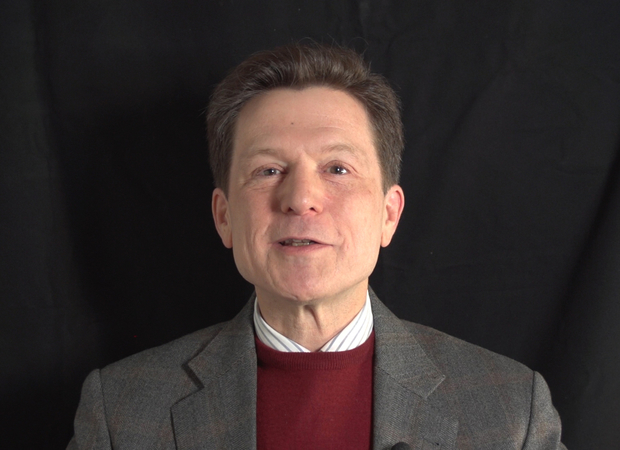
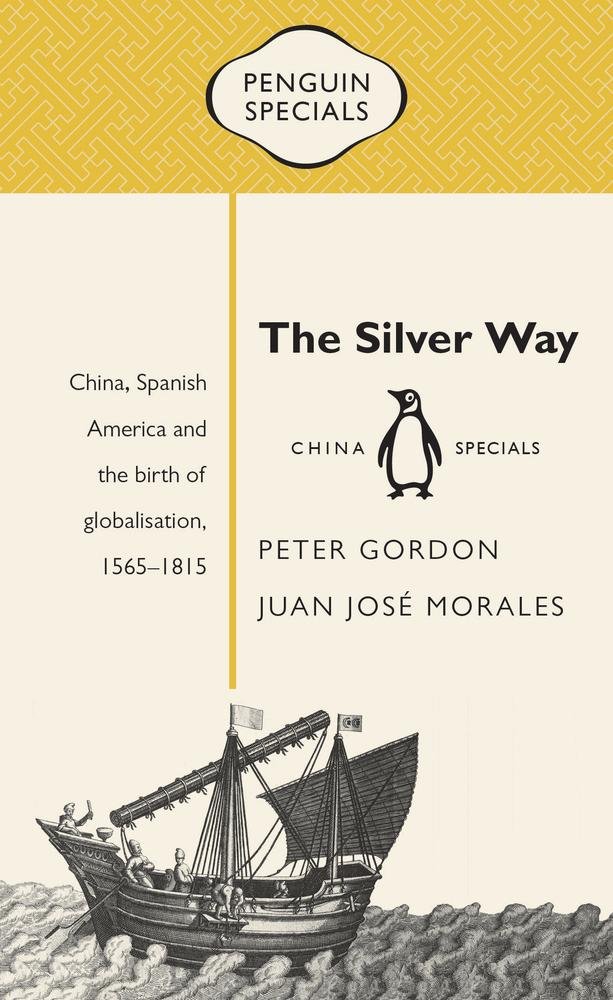
The Silver Way
Long before London and New York rose to international prominence, a trading route was discovered between Spanish America and China that ushered in a new era of globalization. The “Ruta de la Plata,” or “Silver Way,” catalyzed economic and cultural exchange, built the foundations for the first global currency, and led to the rise of the first “world city.” And yet, for all its importance, the Silver Way is too often neglected in conventional narratives on the birth of globalization. Gordon and Morales re-establish its fascinating role in economic and cultural history, with direct consequences for how we understand China today. —Penguin China{chop}
Books
02.28.17
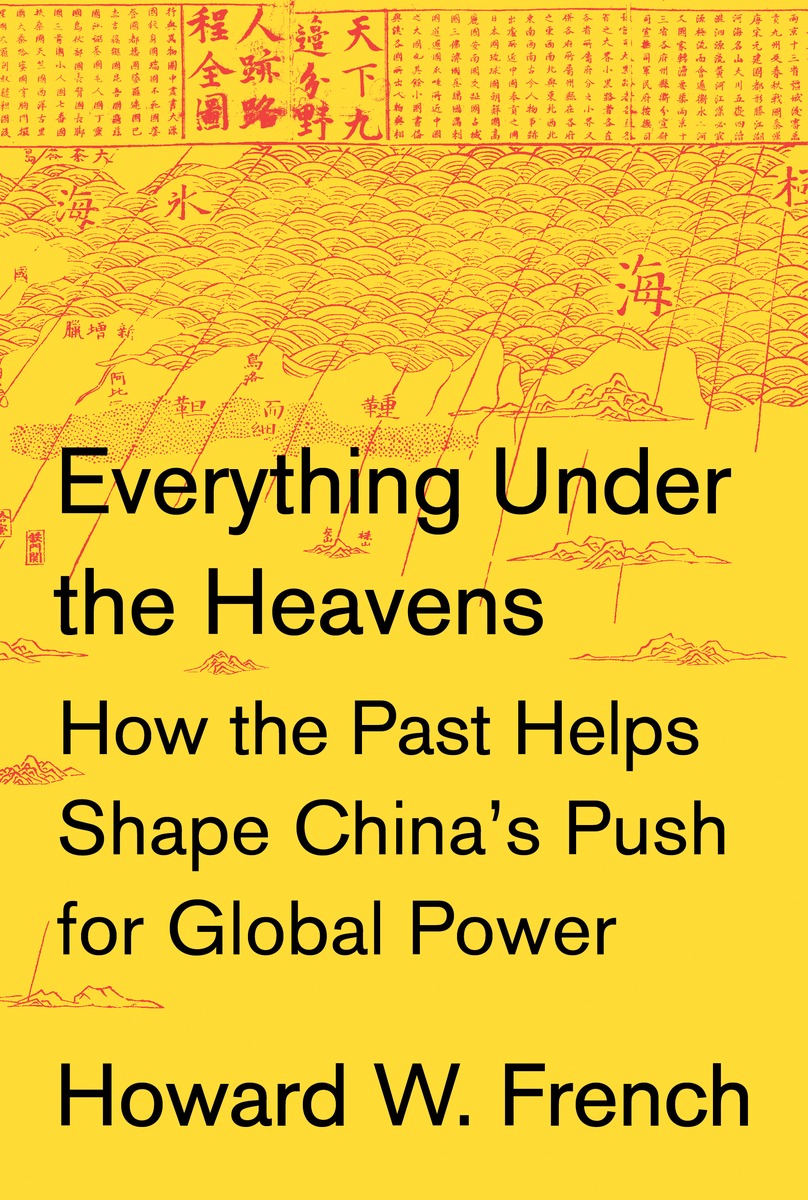
Everything Under the Heavens
From the former New York Times Asia correspondent and author of China’s Second Continent, an incisive investigation of China’s ideological development as it becomes an ever more aggressive player in regional and global diplomacy.For many years after its reform and opening in 1978, China maintained an attitude of false modesty about its ambitions. That role, reports Howard French, has been set aside. China has asserted its place among the global heavyweights, revealing its plans for pan-Asian dominance by building its navy, increasing territorial claims to areas like the South China Sea, and diplomatically bullying smaller players. Underlying this attitude is a strain of thinking that casts China’s present-day actions in decidedly historical terms, as the path to restoring the dynastic glory of the past. If we understand how that historical identity relates to current actions, in ways ideological, philosophical, and even legal, we can learn to forecast just what kind of global power China stands to become–and to interact wisely with a future peer.Steeped in deeply researched history as well as on-the-ground reporting, this is French at his revelatory best. —Penguin Random House{chop}
Books
02.16.17
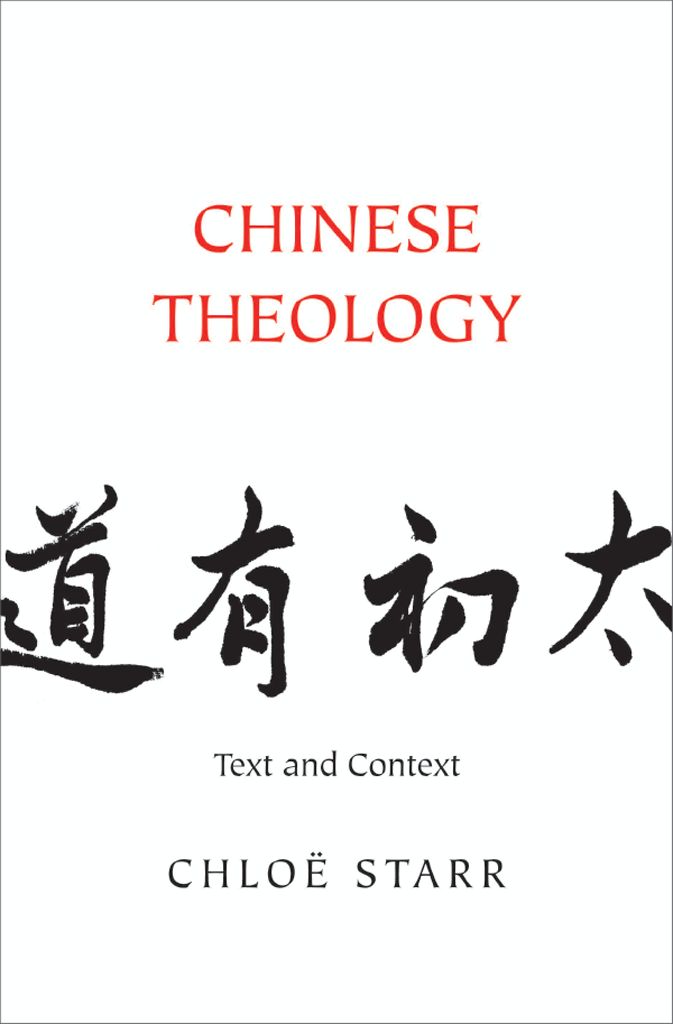
Chinese Theology
In this groundbreaking and authoritative study, Chloë Starr explores key writings of Chinese Christian intellectuals, from philosophical dialogues of the late imperial era to micro-blogs of pastors in the 21st century. Through a series of close textual readings, she sheds new light on such central issues in Chinese theology as Christian identity and the evolving question of how Christians should relate to society and state.Reading these texts in their socio-political and traditional literary contexts, Starr opens a new conversation about the nature of Chinese theology and the challenge it offers to a broad understanding of how theology is created and contextualized. Concentrating on those theologians who have engaged most actively with their cultural and political milieus, Starr argues throughout her readings, as she examines how Chinese literary traditions and reading patterns have shaped Chinese theology, that text is as important as context. —Yale University Press{chop}
Books
02.07.17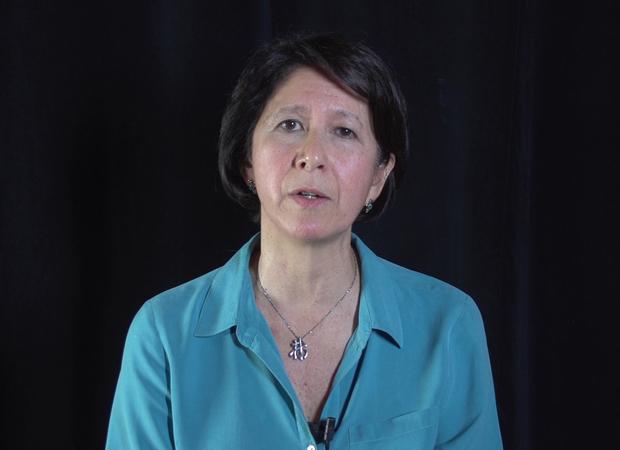
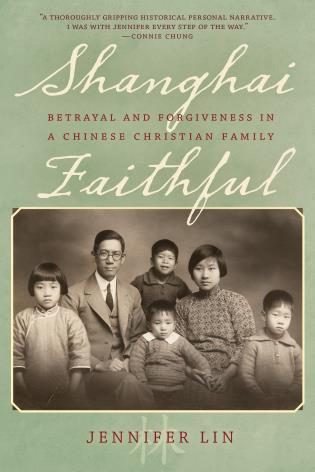
Shanghai Faithful
Within the next decade, China could be home to more Christians than any other country in the world. Through the 150-year saga of a single family, this book vividly dramatizes the remarkable religious evolution of the world’s most populous nation. Shanghai Faithful is both a touching family memoir and a chronicle of the astonishing spread of Christianity in China. Five generations of the Lin family—buffeted by history’s crosscurrents and personal strife—bring to life an epoch that is still unfolding.A compelling cast—a poor fisherman, a doctor who treated opium addicts, an Ivy League-educated priest, and the charismatic preacher Watchman Nee—sets the book in motion. Veteran journalist Jennifer Lin takes readers from remote nineteenth-century mission outposts to the thriving house churches and cathedrals of today’s China. The Lin family—and the book’s central figure, the Reverend Lin Pu-chi—offer witness to China’s tumultuous past, up to and beyond the betrayals and madness of the Cultural Revolution, when the family’s resolute faith led to years of suffering. Forgiveness and redemption bring the story full circle. With its sweep of history and the intimacy of long-hidden family stories, Shanghai Faithful offers a fresh look at Christianity in China—past, present, and future. —Rowman & Littlefield{chop}
Books
02.01.17
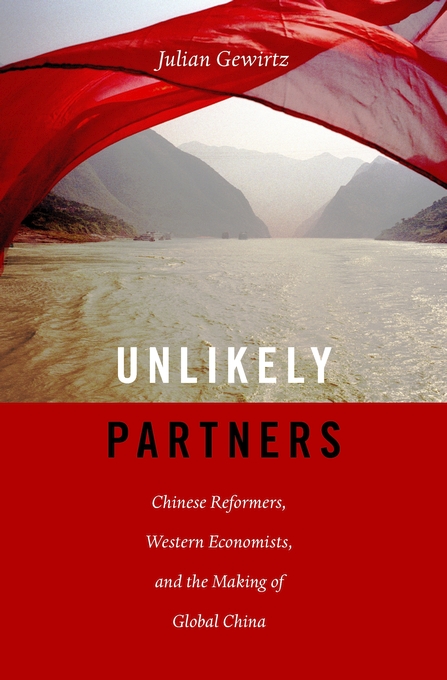
Unlikely Partners
Unlikely Partners recounts the story of how Chinese politicians and intellectuals looked beyond their country’s borders for economic guidance at a key crossroads in the nation’s tumultuous 20th century. Julian Gewirtz offers a dramatic tale of competition for influence between reformers and hardline conservatives during the Deng Xiaoping era, bringing to light China’s productive exchanges with the West.When Mao Zedong died in 1976, his successors seized the opportunity to reassess the wisdom of China’s rigid commitment to Marxist doctrine. With Deng Xiaoping’s blessing, China’s economic gurus scoured the globe for fresh ideas that would put China on the path to domestic prosperity and ultimately global economic power. Leading foreign economists accepted invitations to visit China to share their expertise, while Chinese delegations traveled to the United States, Hungary, Great Britain, West Germany, Brazil, and other countries to examine new ideas. Chinese economists partnered with an array of brilliant thinkers, including Nobel Prize winners, World Bank officials, battle-scarred veterans of Eastern Europe’s economic struggles, and blunt-speaking free-market fundamentalists.Nevertheless, the push from China’s senior leadership to implement economic reforms did not go unchallenged, nor has the Chinese government been eager to publicize its engagement with Western-style innovations. Even today, Chinese Communists decry dangerous Western influences and officially maintain that China’s economic reinvention was the Chinese Communist Party’s achievement alone. Unlikely Partners sets forth the truer story, which has continuing relevance for China’s complex and far-reaching relationship with the West. —Harvard University Press{chop}
Books
01.23.17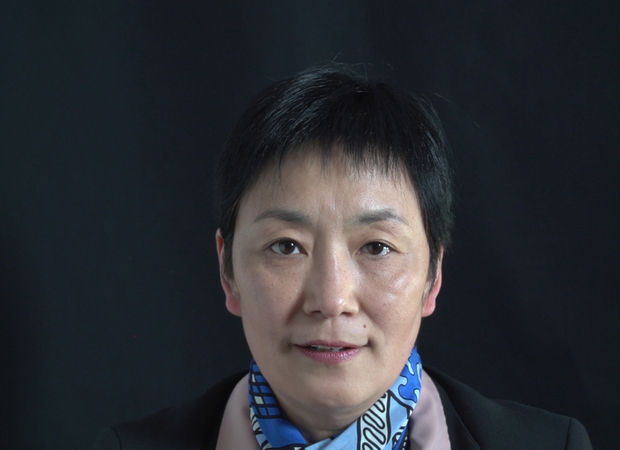
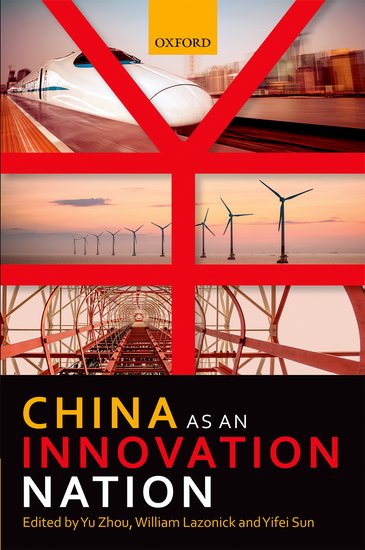
China as an Innovation Nation
This volume assesses China’s transition to innovation-nation status in terms of social conditions, industry characteristics, and economic impacts over the past three decades, also providing insights into future developments.Defining innovation as the process that generates a higher quality, lower cost product than was previously available, the introductory chapter conceptualizes the theory of an innovation nation and the lessons from Japan and the United States. It outlines the key governance, employment, and investment institutions that China must build for such transition to occur, and examines China’s challenges and strategies to innovate in the era of global production systems. Two succeeding chapters explain the evolving roles of the Chinese state in innovation, and the new landscape of venture capital finance. The remaining chapters provide studies of major industries, which contain analyses of the evolving roles of investment by government agencies and business interests in the process. Included in these studies are traditional industries such as mechanical engineering, railroads, and automobiles; rapidly evolving and internationally highly integrated industries such as information-and-communication-technology (ICT); and newly emerging sectors such as wind and solar energy.Written by leading academics in the field, studies in this volume reveal Chinese innovation as diverse across industries and enterprises and fluid over time. In each sector, we observe continued co-evolution of state policy, market demand, and technology development. The strategies and structures of individual companies and industrial ecosystems are changing rapidly. The sum total of the studies is a great step forward in our understanding of the industrial foundations of China’s attempt to become an innovation nation. —Oxford University Press{chop}
Books
01.11.17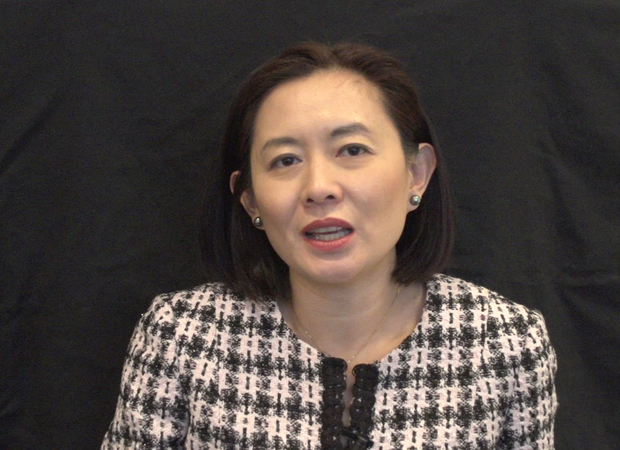
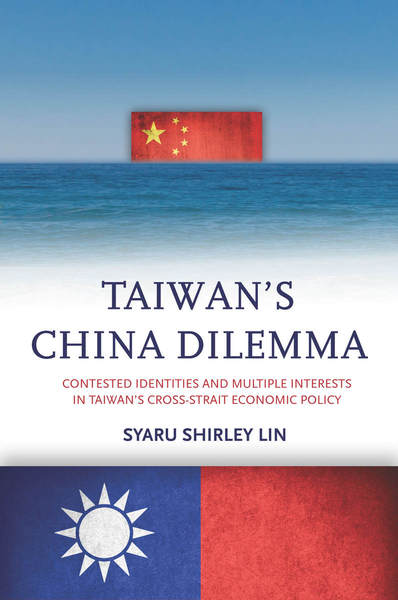
Taiwan’s China Dilemma
China and Taiwan share one of the world’s most complex international relationships. Although similar cultures and economic interests have promoted an explosion of economic ties between them since the late 1980s, these ties have not led to an improved political relationship, let alone progress toward the unification that both governments once claimed to seek. In addition, Taiwan’s recent Sunflower Movement succeeded in obstructing deeper economic ties with China. Why has Taiwan’s policy toward China been so inconsistent?Taiwan’s China Dilemma explains the divergence between the development of economic and political relations across the Taiwan Strait through the interplay of national identity and economic interests. Using primary sources, opinion surveys, and interviews with Taiwanese opinion leaders, Syaru Shirley Lin paints a vivid picture of one of the most unsettled and dangerous relationships in the contemporary world, and illustrates the growing backlash against economic liberalization and regional economic integration around the world. —Stanford University Press{chop}
Books
01.04.17
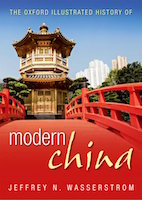
The Oxford Illustrated History of Modern China
This lavishly illustrated volume explores the history of China during a period of dramatic shifts and surprising transformations, from the founding of the Qing Dynasty (1644-1912) through to the present day.The Oxford Illustrated History of Modern China promises to be essential reading for anyone who wants to understand this rising superpower on the verge of what promises to be the “Chinese century,” introducing readers to important but often overlooked events in China’s past, such as the bloody Taiping Civil War (1850-1864), which had a death toll far higher than the roughly contemporaneous American Civil War. It also helps readers see more familiar landmarks in Chinese history in new ways, such as the Opium War (1839-1842), the Boxer Uprising of 1900, the rise to power of the Chinese Communist Party in 1949, and the Tiananmen protests and Beijing Massacre of 1989.This is one of the first major efforts—and in many ways the most ambitious to date—to come to terms with the broad sweep of modern Chinese history, taking readers from the origins of modern China right up through the dramatic events of the last few years (the Beijing Games, the financial crisis, and China’s rise to global economic pre-eminence) which have so fundamentally altered Western views of China and China’s place in the world. —Oxford University Press{chop}
Books
12.20.16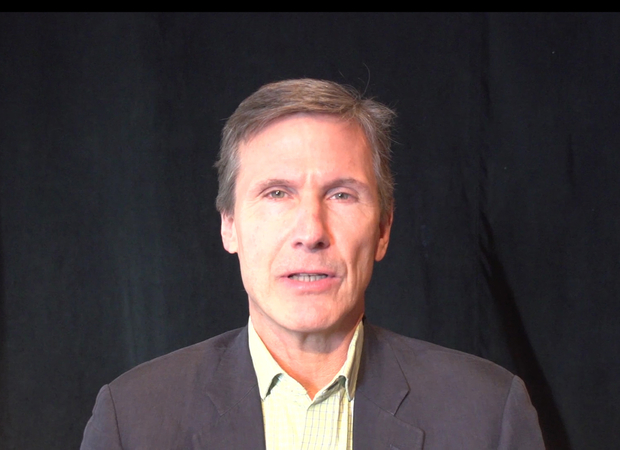
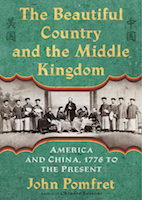
The Beautiful Country and the Middle Kingdom
From the clipper ships that ventured to Canton hauling cargos of American ginseng to swap for Chinese tea, to the U.S. warships facing off against China’s growing navy in the South China Sea, from the Yankee missionaries who brought Christianity and education to China, to the Chinese who built the American West, the United States and China have always been dramatically intertwined. For more than two centuries, American and Chinese statesmen, merchants, missionaries, and adventurers, men and women, have profoundly influenced the fate of these nations. While we tend to think of America’s ties with China as starting in 1972 with the visit of President Richard Nixon to China, the patterns—rapturous enchantment followed by angry disillusionment—were set in motion hundreds of years earlier.Drawing on personal letters, diaries, memoirs, government documents, and contemporary news reports, John Pomfret reconstructs the surprising, tragic, and marvelous ways Americans and Chinese have engaged with one another through the centuries. A fascinating and thrilling account, The Beautiful Country and the Middle Kingdom is also an indispensable book for understanding the most important—and often the most perplexing—relationship between any two countries in the world. —Henry Holt{chop}
Books
12.15.16
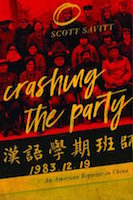
Crashing the Party
It’s 1983. Scott Savitt, one of the first American exchange students in Beijing, picks up his guitar and begins strumming “Blackbird.” He’s soon surrounded by Chinese students who know every word to every Beatles song he plays. Savitt stays on in Beijing, working as a reporter for Asiaweek Magazine. The city’s first nightclubs open; rock ‘n’ roll promises democracy. Promoted to foreign correspondent for The Los Angeles Times and then United Press International, Savitt finds himself drawn into China’s political heart. His girlfriend is the assistant to Bette Bao Lord, the wife of the U.S. ambassador. He interviews people who will become leaders of the democracy movement.Later, at 25 years old, Savitt is the youngest accredited foreign correspondent in China, with an intimate knowledge of Beijing’s backstreets. But as the seven-week occupation of Tiananmen Square ends in bloodshed on June 4, 1989, his greatest asset is his flame-red 500cc Honda motorcycle—giving Savitt the freedom to witness first-hand what the Chinese government still denies ever took place. After Tiananmen, Savitt founds the first independent English-language newspaper in China, Beijing Scene. He knows that it’s only a matter of time before the authorities move in, and sure enough, in 2000 he’s arrested, flung into solitary confinement and, after a month in jail, deported.Savitt’s extraordinary memoir of his two decades in China manages to take an extremely complex political-historical subject and turn it into an adventure story. —Soft Skull{chop}
Books
11.04.16

Land of Fish and Rice
The lower Yangtze region, or Jiangnan, with its modern capital Shanghai, has been known since ancient times as a “land of fish and rice.” For centuries, local cooks have harvested the bounty of its lakes, rivers, fields, and mountains to create a cuisine renowned for its delicacy and beauty. In Land of Fish and Rice, Fuchsia Dunlop draws on years of study and exploration to present the recipes, techniques, and ingredients of the Jiangnan kitchen. You will be inspired to try classic dishes such as Beggar’s Chicken and sumptuous Dongpo Pork, as well as fresh, simple recipes such as Clear-Steamed Sea Bass and Fresh Soybeans with Pickled Greens. Evocatively written and featuring stunning recipe photography, this is an important new work celebrating one of China’s most fascinating culinary regions. —W.W. Norton{chop}
Books
10.11.16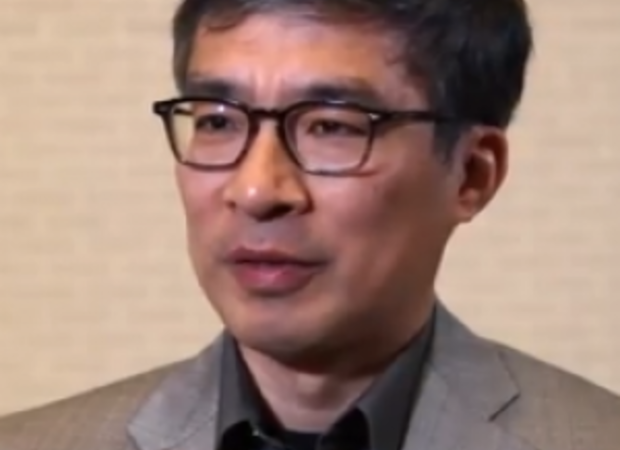
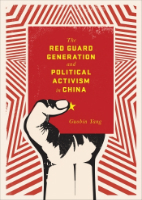
The Red Guard Generation and Political Activism in China
Raised to be “flowers of the nation,” the first generation born after the founding of the People’s Republic of China was united in its political outlook and ambitions. Its members embraced the Cultural Revolution of 1966 but soon split into warring factions. Guobin Yang investigates the causes of this fracture and argues that Chinese youth engaged in an imaginary revolution from 1966 to 1968, enacting a political mythology that encouraged violence as a way to prove one’s revolutionary credentials. This same competitive dynamic would later turn the Red Guard against the communist government.Throughout the 1970s, the majority of Red Guard youth were sent to work in rural villages. These relocated revolutionaries developed an appreciation for the values of ordinary life, and an underground cultural movement was born. Rejecting idolatry, their new form of resistance marked a distinct reversal of Red Guard radicalism and signaled a new era of enlightenment, culminating in the Democracy Wall movement of the late 1970s and, finally, the Tiananmen protest of 1989. Yang completes his significant recasting of Red Guard activism with a chapter on the politics of history and memory, arguing that contemporary memories of the Cultural Revolution are factionalized along the lines of political division that formed 50 years before. —Columbia University Press{chop}
Books
10.07.16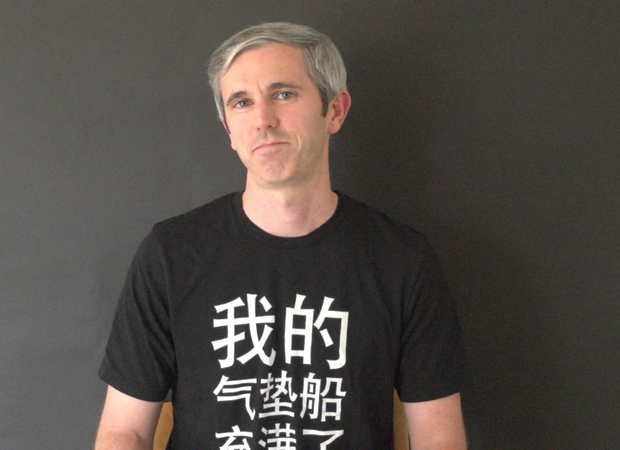
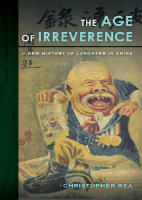
The Age of Irreverence
The Age of Irreverence tells the story of why China’s entry into the modern age was not just traumatic, but uproarious. As the Qing dynasty slumped toward extinction, prominent writers compiled jokes into collections they called “histories of laughter.” In the first years of the Republic, novelists, essayists, and illustrators alike used humorous allegories to make veiled critiques of the new government. But, again and again, political and cultural discussion erupted into invective, as critics gleefully jeered and derided rivals in public. Farceurs drew followings in the popular press, promoting a culture of practical joking and buffoonery. Eventually, these various expressions of hilarity proved so offensive to high-brow writers that they launched a concerted campaign to transform the tone of public discourse, hoping to displace the old forms of mirth with a new one they called youmo (humor).Christopher Rea argues that this period—from the 1890s to the 1930s—transformed how Chinese people thought and talked about what is funny. Focusing on five cultural expressions of laughter—jokes, play, mockery, farce, and humor—he reveals the textures of comedy that were a part of everyday life during modern China’s first “age of irreverence.” This new history of laughter not only offers an unprecedented and up-close look at a neglected facet of Chinese cultural modernity, but also reveals its lasting legacy in the Chinese language of the comic today and its implications for our understanding of humor as a part of human culture. —University of California Press{chop}
Books
08.02.16
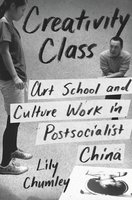
Creativity Class
The last three decades have seen a massive expansion of China’s visual culture industries, from architecture and graphic design to fine art and fashion. New ideologies of creativity and creative practices have reshaped the training of a new generation of art school graduates. Creativity Class is the first book to explore how Chinese art students develop, embody, and promote their own personalities and styles as they move from art school entrance test preparation, to art school, to work in the country’s burgeoning culture industries. Lily Chumley shows the connections between this creative explosion and the Chinese government’s explicit goal of cultivating creative human capital in a new “market socialist” economy where value is produced through innovation.Drawing on years of fieldwork in China’s leading art academies and art test prep schools, Chumley combines ethnography and oral history with analyses of contemporary avant-garde and official art, popular media, and propaganda. Examining the rise of a Chinese artistic vanguard and creative knowledge-based economy, Creativity Class sheds light on an important facet of today’s China. —Princeton University Press{chop}
Books
06.28.16

John Birch
John Birch was better known in death than life. Shot and killed by Communists in China in 1945, he posthumously became the namesake for a right-wing organization whose influence is still visible in today’s Tea Party. This is the remarkable story of who he actually was: an American missionary-turned-soldier who wanted to save China, but instead became a victim. Terry Lautz, a longtime scholar of U.S.-China relations, has investigated archives, spoken with three of Birch’s brothers, found letters written to the women he loved, and visited sites in China where he lived and died. The result, John Birch: A Life, is the first authoritative biography of this fascinating figure whose name was appropriated for a political cause.Raised as a Baptist fundamentalist, Birch became a missionary to China prior to America’s entry into the Second World War. After Pearl Harbor, he volunteered for the U.S. Army in China, served with Claire Chennault, Commander of the famed Flying Tigers, and operated behind enemy lines as an intelligence officer. He planned to resume his missionary work after the war, but was killed in a dispute with Communist troops just days after Japan’s surrender. During the heyday of the Cold War in the 1950s, Robert Welch, a retired businessman from Boston, chose Birch as the figurehead for the John Birch Society, believing that his death was evidence of conspiracy at the highest levels of government. The Birch Society became one of the most polarizing organizations of its time, and the name of John Birch became synonymous with right-wing extremism.Cutting through the layers of mythology surrounding Birch, Lautz deftly presents his life and his afterlife, placing him not only in the context of anti-communism but in the longstanding American quest to shape China’s destiny. —Oxford University Press{chop}
Books
06.22.16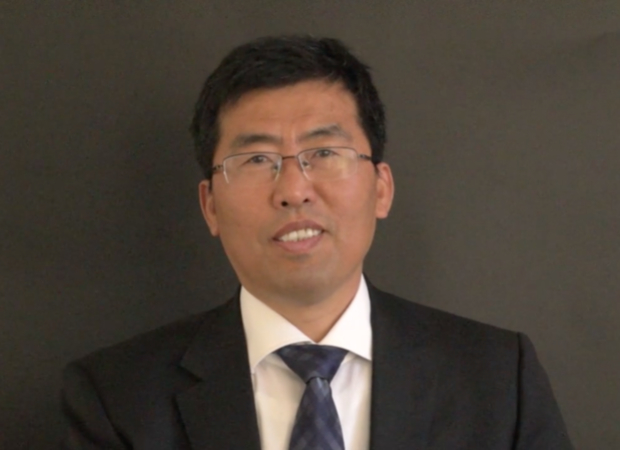
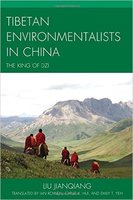
Tibetan Environmentalists in China
This book weaves together the life stories of five extraordinary contemporary Tibetans involved in environmental protection (as well as a host of secondary characters): Tashi Dorje, a well-known and celebrated environmentalist; Karma Samdrup, a philanthropist, businessman, and environmentalist; Rinchen Samdrup, Karma’s brother, another extraordinary environmentalist; Gendun, a painter, historian, and researcher from Amdo; and Musuo, a Tibetan from the Dechin area of northwest Yunnan who founded the Khawakarpo Culture Society.In the politically fraught and ever-worsening situation for Tibetans within China today, it is often said that the only possible path for a better solution will be through a change in the way that the majority Chinese society thinks about and understands Tibetans, their aspirations, histories, and desires. This book provides the first such account by drawing readers in with beautiful narrative prose and fascinating stories, and then using their attention to demystify Tibetans, cultivating in the reader a sense of empathy as well as facts upon which to rebuild an intercultural understanding. It is the first work that seriously aims to let the Chinese public understand Tibetans as both products of an admirable culture and as complex individuals negotiating religious ideals, economic change, and sociopolitical constraints. In short it opens up a whole new way of understanding Tibet. —Rowman & Littlefield/Lexington Books {chop}
Books
06.15.16
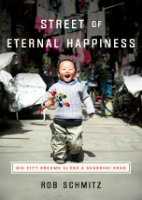
Street of Eternal Happiness
Modern Shanghai: a global city in the midst of a renaissance, where dreamers arrive each day to partake in a mad torrent of capital, ideas, and opportunity. Marketplace’s Rob Schmitz is one of them. He immerses himself in his neighborhood, forging deep relationships with ordinary people who see in the city’s sleek skyline a brighter future and a chance to rewrite their destinies. There’s Zhao, whose path from factory floor to shopkeeper is sidetracked by her desperate measures to ensure a better future for her sons. Down the street lives Auntie Fu, a fervent capitalist forever trying to improve herself with religion and get-rich-quick schemes while keeping her skeptical husband at bay. Up a flight of stairs, musician and café owner CK sets up shop to attract young dreamers like himself, but learns he’s searching for something more. As Schmitz becomes more involved in their lives, he makes surprising discoveries which untangle the complexities of modern China: A mysterious box of letters that serve as a portal to a family’s—and country’s—dark past, and an abandoned neighborhood where fates have been violently altered by unchecked power and greed.A tale of 21st century China, Street of Eternal Happiness profiles China’s distinct generations through multifaceted characters who illuminate an enlightening, humorous, and at times heartrending journey along the winding road to the Chinese Dream. Each story adds another layer of humanity and texture to modern China, a tapestry also woven with Schmitz’s insight as a foreign correspondent. The result is an intimate and surprising portrait that dispenses with the tired stereotypes of a country we think we know, immersing us instead in the vivid stories of the people who make up one of the world’s most captivating cities. —Crown Publishers {chop}
Books
05.30.16
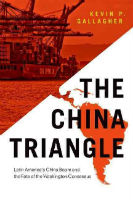
The China Triangle: Latin America's China Boom and the Fate of the Washington Consensus
In The China Triangle, Kevin P. Gallagher traces the development of the China-Latin America trade over time and covers how it has affected the centuries-old (and highly unequal) U.S.-Latin American relationship. He argues that despite these opportunities Latin American nations have little to show for riding the coattails of the ‘China Boom’ and now face significant challenges in the next decades as China’s economy slows down and shifts more toward consumption and services. While the Latin American region saw significant economic growth due to China's rise over the past decades, Latin Americans saved very little of the windfall profits it earned even as the region saw a significant hollowing of its industrial base. What is more, commodity-led growth during the China boom reignited social and environmental conflicts across the region.
Scholars and reporters have covered the Chinese expansion into East Asia, Southeast Asia, Australasia, Africa, the U.S., and Europe. Yet China’s penetration Latin America is as little understood as it is significant-especially for America given its longstanding ties to the region. Gallagher provides a clear overview of China’s growing economic ties with Latin America and points to ways that Latin American nations, China, and even the United States can act in order to make the next decades of China-Latin America economic activity more prosperous for all involved. —Amazon{chop}
Books
05.18.16
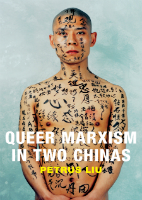
Queer Marxism in Two Chinas
In Queer Marxism in Two Chinas, Petrus Liu rethinks the relationship between Marxism and queer cultures in mainland China and Taiwan. Whereas many scholars assume the emergence of queer cultures in China signals the end of Marxism and demonstrates China’s political and economic evolution, Liu finds the opposite to be true. He challenges the persistence of Cold War formulations of Marxism that position it as intellectually incompatible with queer theory, and shows how queer Marxism offers a nonliberal alternative to Western models of queer emancipation. The work of queer Chinese artists and intellectuals not only provides an alternative to liberal ideologies of inclusion and diversity, but demonstrates how different conceptions of and attitudes toward queerness in China and Taiwan stem from geopolitical tensions. With Queer Marxism in Two Chinas Liu offers a revision to current understandings of what queer theory is, does, and can be. —Duke University Press{chop}
Books
05.05.16
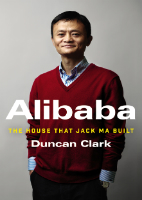
Alibaba
In just a decade and half, Jack Ma, a man from modest beginnings who started out as an English teacher, founded and built Alibaba into one of the world’s largest companies, an e-commerce empire on which hundreds of millions of Chinese consumers depend. Alibaba’s $25 billion IPO in 2014 was the largest global IPO ever. A Rockefeller of his age who is courted by CEOs and Presidents around the world, Jack is an icon for China’s booming private sector and the gatekeeper to hundreds of millions of middle class consumers.Duncan Clark first met Jack in 1999 in the small apartment where Jack founded Alibaba. Granted unprecedented access to a wealth of new material, including exclusive interviews, Clark draws on his own experience as an early adviser to Alibaba and two decades in China chronicling the Internet’s impact on the country to create an authoritative, compelling narrative account of Alibaba’s rise.How did Jack overcome his humble origins and early failures to achieve massive success with Alibaba? How did he outsmart rival entrepreneurs from China and Silicon Valley? Can Alibaba maintain its 80 percent market share? As it forges ahead into finance and entertainment, are there limits to Alibaba’s ambitions? How does the Chinese government view its rise? Will Alibaba expand further overseas, including in the U.S.? Clark tells Alibaba’s tale in the context of China’s momentous economic and social changes, illuminating an unlikely corporate titan as never before. —HarperCollins{chop}
Books
04.18.16
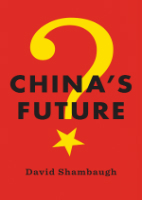
China’s Future
China’s future arguably is the most consequential question in global affairs. Having enjoyed unprecedented levels of growth, China is at a critical juncture in the development of its economy, society, polity, national security, and international relations. The direction the nation takes at this turning point will determine whether it stalls or continues to develop and prosper.Will China be successful in implementing a new wave of transformational reforms that could last decades and make it the world’s leading superpower? Or will its leaders shy away from the drastic changes required because the regime’s power is at risk? If so, will that lead to prolonged stagnation or even regime collapse? Might China move down a more liberal or even democratic path? Or will China instead emerge as a hard, authoritarian, and aggressive superstate?In this new book, David Shambaugh argues that these potential pathways are all possibilities—but they depend on key decisions yet to be made by China’s leaders, different pressures from within Chinese society, as well as actions taken by other nations. Assessing these scenarios and their implications, he offers a thoughtful and clear study of China’s future for all those seeking to understand the country’s likely trajectory over the coming decade and beyond. —Polity Press{chop}
Books
02.23.16
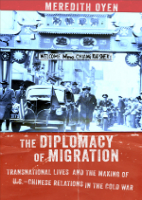
The Diplomacy of Migration
During the Cold War, both Chinese and American officials employed a wide range of migration policies and practices to pursue legitimacy, security, and prestige. They focused on allowing or restricting immigration, assigning refugee status, facilitating student exchanges, and enforcing deportations. The Diplomacy of Migration focuses on the role these practices played in the relationship between the United States and the Republic of China both before and after the move to Taiwan. Meredith Oyen identifies three patterns of migration diplomacy: migration legislation as a tool to achieve foreign policy goals, migrants as subjects of diplomacy and propaganda, and migration controls that shaped the Chinese American community.Using sources from diplomatic and governmental archives in the United States, the Republic of China on Taiwan, the People’s Republic of China, and the United Kingdom, Oyen applies a truly transnational perspective. The Diplomacy of Migration combines important innovations in the field of diplomatic history with new international trends in migration history to show that even though migration issues were often considered “low stakes” or “low risk” by foreign policy professionals concerned with Cold War politics and the nuclear age, they were neither “no risk” nor unimportant to larger goals. Instead, migration diplomacy became a means of facilitating other foreign policy priorities, even when doing so came at great cost for migrants themselves. —Cornell University Press{chop}Correction: Meredith Oyen’s employer was misidentified in an earlier version of this video. She is an Assistant Professor at the University of Maryland, Baltimore County.
Books
12.29.15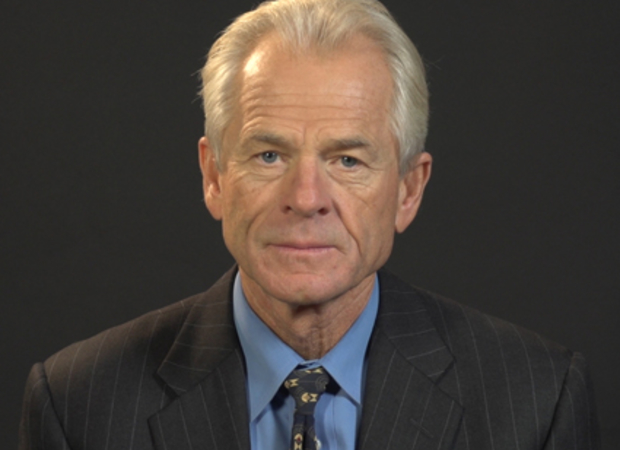
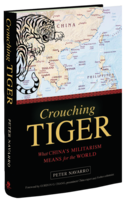
Crouching Tiger
Will there be war with China? This book provides the most complete and accurate assessment of the probability of conflict between the United States and the rising Asian superpower. Equally important, it lays out an in-depth analysis of the possible pathways to peace. Written like a geopolitical detective story, the narrative encourages reader interaction by starting each chapter with an intriguing question that often challenges conventional wisdom.Based on interviews with more than thirty top experts, the author highlights a number of disturbing facts about China's recent military buildup and the shifting balance of power in Asia: the Chinese are deploying game-changing "carrier killer" ballistic missiles; some of America's supposed allies in Europe and Asia are selling highly lethal weapons systems to China in a perverse twist on globalization; and, on the U.S. side, debilitating cutbacks in the military budget send a message to the world that America is not serious about its "pivot to Asia."In the face of these threatening developments, the book stresses the importance of maintaining U.S. military strength and preparedness and strengthening alliances, while warning against a complacent optimism that relies on economic engagement, negotiations, and nuclear deterrence to ensure peace.Accessible to readers from all walks of life, this multidisciplinary work blends geopolitics, economics, history, international relations, military doctrine, and political science to provide a better understanding of one of the most vexing problems facing the world. —Prometheus Books{chop}
Books
12.16.15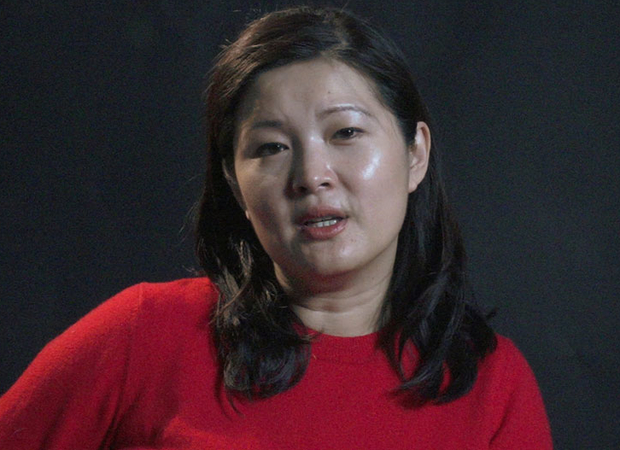
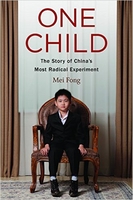
One Child
When Communist Party leaders adopted the one-child policy in 1980, they hoped curbing birth-rates would help lift China’s poorest and increase the country’s global stature. But at what cost? Now, as China closes the book on the policy after more than three decades, it faces a population grown too old and too male, with a vastly diminished supply of young workers.Mei Fong has spent years documenting the policy’s repercussions on every sector of Chinese society. In One Child, she explores its true human impact, traveling across China to meet the people who live with its consequences. Their stories reveal a dystopian reality: unauthorized second children ignored by the state, only-children supporting aging parents and grandparents on their own, villages teeming with ineligible bachelors, and an ungoverned adoption market stretching across the globe. Fong tackles questions that have major implications for China’s future: whether its “Little Emperor” cohort will make for an entitled or risk-averse generation; how China will manage to support itself when one in every four people is over sixty-five years old; and above all, how much the one-child policy may end up hindering China’s growth.Weaving in Fong’s reflections on striving to become a mother herself, One Child offers a nuanced and candid report from the extremes of family planning. —Houghton Mifflin Harcourt{chop}
Books
12.10.15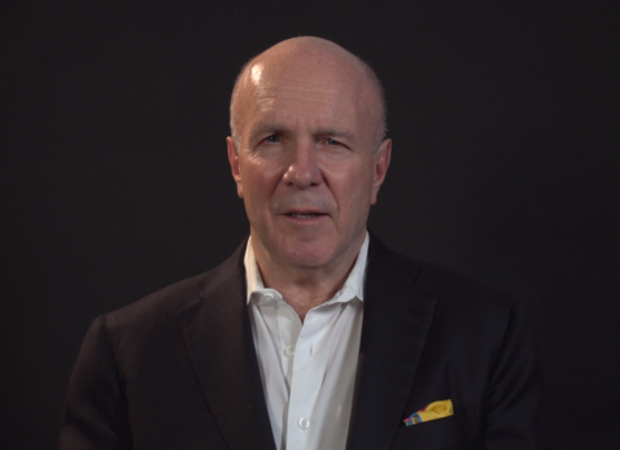
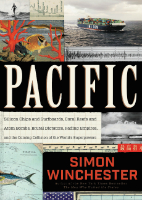
Pacific
Following his acclaimed Atlantic and The Men Who United the States, New York Times bestselling author Simon Winchester offers an enthralling biography of the Pacific Ocean and its role in the modern world, exploring our relationship with this imposing force of nature.As the Mediterranean shaped the classical world, and the Atlantic connected Europe to the New World, the Pacific Ocean defines our tomorrow. With China on the rise, so, too, are the American cities of the West coast, including Seattle, San Francisco, and the long cluster of towns down the Silicon Valley.Today, the Pacific is ascendant. Its geological history has long transformed us—tremendous earthquakes, volcanoes, and tsunamis—but its human history, from a Western perspective, is quite young, beginning with Magellan’s sixteenth-century circumnavigation. It is a natural wonder whose most fascinating history is currently being made.In telling the story of the Pacific, Simon Winchester takes us from the Bering Strait to Cape Horn, the Yangtze River to the Panama Canal, and to the many small islands and archipelagos that lie in between. He observes the fall of a dictator in Manila, visits aboriginals in northern Queensland, and is jailed in Tierra del Fuego, the land at the end of the world. His journey encompasses a trip down the Alaska Highway, a stop at the isolated Pitcairn Islands, and a trek across South Korea and a glimpse of its mysterious northern neighbor.Winchester’s personal experience is vast and his storytelling second to none. And his historical understanding of the region is formidable, making Pacific a paean to this magnificent sea of beauty, myth, and imagination that is transforming our lives. —HarperCollins{chop}
Books
10.07.15
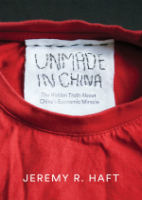
Unmade in China
If you look carefully at how things are actually made in China—from shirts to toys, apple juice to oil rigs—you see a reality that contradicts every widely-held notion about the world’s so-called economic powerhouse. From the inside looking out, China is not a manufacturing juggernaut. It’s a Lilliputian. Nor is it a killer of American jobs. It’s a huge job creator. Rising China is importing goods from America in such volume that millions of U.S. jobs are sustained through Chinese trade and investment. In Unmade in China, entrepreneur and Georgetown University business professor Jeremy R. Haft lifts the lid on the hidden world of China’s intricate supply chains. Informed by years of experience building new companies in China, Haft’s unique, insider’s view reveals a startling picture of an economy which struggles to make baby formula safely, much less a nuclear power plant. Using firm-level data and recent case studies, Unmade in China tells the story of systemic risk in Chinese manufacturing and why this is both really bad and really good news for America. —Polity Press{chop}
Books
08.27.15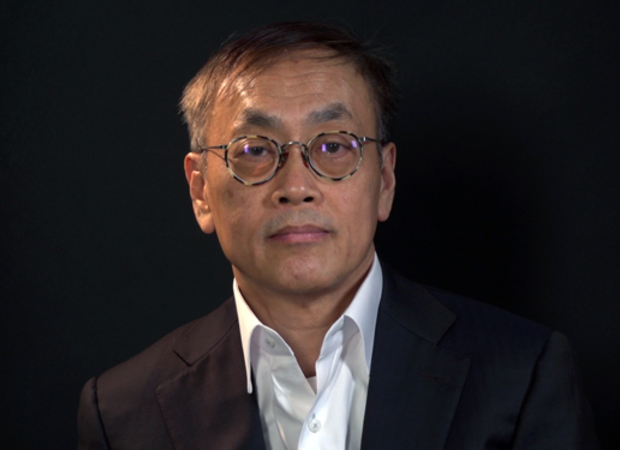
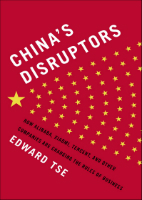
China’s Disruptors
In September 2014, Chinese e-commerce giant Alibaba raised $25 billion in the world’s biggest-ever initial public offering. Since then, millions of investors and managers worldwide have pondered a fundamental question: What’s really going on with the new wave of China’s disruptors?Alibaba wasn’t an outlier—it’s one of a rising tide of thriving Chinese companies, mostly but not exclusively in the technology sector. Overnight, its founder, Jack Ma, appeared on the same magazine covers as American entrepreneurial icons like Mark Zuckerberg. Ma was quickly followed by the founders of other previously little-known companies, such as Baidu, Tencent, and Xiaomi.Over the past two decades, an unprecedented burst of entrepreneurialism has transformed China’s economy from a closed, impoverished, state-run system into a major power in global business. As products in China become more and more sophisticated, and as its companies embrace domestically developed technology, we will increasingly see Chinese goods setting global standards. Meanwhile, companies in the rest of the world wonder how they can access the fast-rising incomes of China’s 1.3 billion consumers.Now Edward Tse, a leading global strategy consultant, reveals how China got to this point, and what the country’s rise means for the United States and the rest of the world. Tse has spent more than twenty years working with senior Chinese executives, learning firsthand how China’s most powerful companies operate. He’s an expert on how private firms are thriving in what is still, officially, a communist country. His book draws on exclusive interviews and case studies to explore questions such as:What drives China’s entrepreneurs? Personal fame and fortune—or a quest for national pride and communal achievement?How do these companies grow so quickly? In 2005, Lenovo sold just one category of products (personal computers) in one market, China. Today, not only is it the world’s largest PC seller; it is also the world’s third-largest smartphone seller.How does Chinese culture shape the strategies and tactics of these business leaders? Can outsiders copy what the Chinese are doing?Can capitalists really thrive within a communist system? How does Tencent’s Pony Ma serve as a member of China’s parliament while running a company that dominates online games and messaging?What impact will China have on the rest of the world as its private companies enter new markets, acquire foreign businesses, and threaten established firms in countless industries?As Tse concludes: “I believe that as a consequence of the opening driven by China’s entrepreneurs, the push to invest in science, research, and development, and the new freedoms that people are enjoying across the country, China has embarked on a renaissance that could rival its greatest era in history—the Tang dynasty. These entrepreneurs are the front line in China’s intense hunger for success. They will have an even more remarkable impact on the global economy in the future, through the rest of this decade and beyond.” —Portfolio/Penguin{chop}
Books
07.07.15
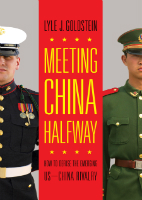
Meeting China Halfway
Though a U.S.–China conflict is far from inevitable, major tensions are building in the Asia-Pacific region. These strains are the result of historical enmity, cultural divergence, and deep ideological estrangement, not to mention apprehensions fueled by geopolitical competition and the closely related "security dilemma." Despite worrying signs of intensifying rivalry between Washington and Beijing, few observers have provided concrete paradigms to lead this troubled relationship away from disaster. Meeting China Halfway: How to Defuse the Emerging US-China Rivalry is dramatically different from any other book about U.S.-China relations. Lyle J. Goldstein's explicit focus in almost every chapter is on laying bare both U.S. and Chinese perceptions of where their interests clash and proposing new paths to ease bilateral tensions through compromise. Each chapter contains a “cooperation spiral”―the opposite of an escalation spiral―to illustrate the policy proposals. Goldstein not only parses findings from the latest American scholarship but also breaks new ground by analyzing hundreds of Chinese-language sources, including military publications, never before evaluated by Western experts. Goldstein makes one hundred policy proposals over the course of this book, not because these are the only solutions to arresting the alarming course toward conflict, but rather to inaugurate a genuine debate regarding cooperative policy solutions to the most vexing problems in U.S.-China relations. ―Georgetown University Press {chop}
Books
06.25.15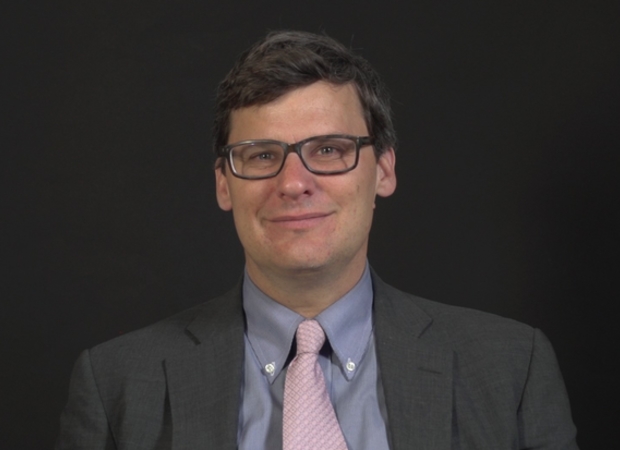
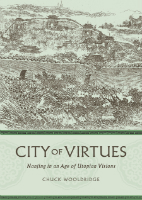
City of Virtues
Throughout Nanjing’s history, writers have claimed that its spectacular landscape of mountains and rivers imbued the city with “royal qi,” making it a place of great political significance. City of Virtues examines the ways a series of visionaries, drawing on past glories of the city, projected their ideologies onto Nanjing as they constructed buildings, performed rituals, and reworked the literary heritage of the city. More than an urban history of Nanjing from the late 18th century until 1911―encompassing the Opium War, the Taiping occupation of the city, the rebuilding of the city by Zeng Guofan, and attempts to establish it as the capital of the Republic of China―this study shows how utopian visions of the cosmos shaped Nanjing’s path through the turbulent 19th century.―University of Washington Press{chop}
Books
06.16.15
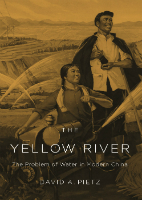
The Yellow River
Flowing through the heart of the North China Plain―home to 200 million people―the Yellow River sustains one of China’s core regions. Yet this vital water supply has become highly vulnerable in recent decades, with potentially serious repercussions for China’s economic, social, and political stability. The Yellow River is an investigative expedition to the source of China’s contemporary water crisis, mapping the confluence of forces that have shaped the predicament that the world’s most populous nation now faces in managing its water reserves.Chinese governments have long struggled to maintain ecological stability along the Yellow River, undertaking ambitious programs of canal and dike construction to mitigate the effects of recurrent droughts and floods. But particularly during the Maoist years the North China Plain was radically re-engineered to utilize every drop of water for irrigation and hydroelectric generation. As David A. Pietz shows, Maoist water management from 1949 to 1976 cast a long shadow over the reform period, beginning in 1978. Rapid urban growth, industrial expansion, and agricultural intensification over the past three decades of China’s economic boom have been realized on a water resource base that was acutely compromised, with effects that have been more difficult and costly to overcome with each passing decade. Chronicling this complex legacy, The Yellow River provides important insight into how water challenges will affect China’s course as a twenty-first-century global power.―Harvard University Press{chop}
Books
06.10.15
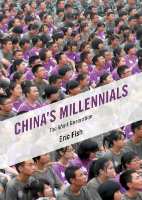
China’s Millennials
In 1989, students marched on Tiananmen Square demanding democratic reform. The Communist Party responded with a massacre, but it was jolted into restructuring the economy and overhauling the education of its young citizens. A generation later, Chinese youth are a world apart from those who converged at Tiananmen. Brought up with lofty expectations, they’ve been accustomed to unprecedented opportunities on the back of China’s economic boom. But today, China’s growth is slowing and its demographics rapidly shifting, with the boom years giving way to a painful hangover.Immersed in this transition, Eric Fish, a millennial himself, profiles youth from around the country and how they are navigating the education system, the workplace, divisive social issues, and a resurgence in activism. Based on interviews with scholars, journalists, and hundreds of young Chinese, his engrossing book challenges the idea that today’s youth have been pacified by material comforts and nationalism. Following rural Henan students struggling to get into college, a computer prodigy who sparked a nationwide patriotic uproar, and young social activists grappling with authorities, Fish deftly captures youthful struggle, disillusionment, and rebellion in a system that is scrambling to keep them in line—and, increasingly, scrambling to adapt when its youth refuse to conform.—Rowman & Littlefield{chop}
Books
06.02.15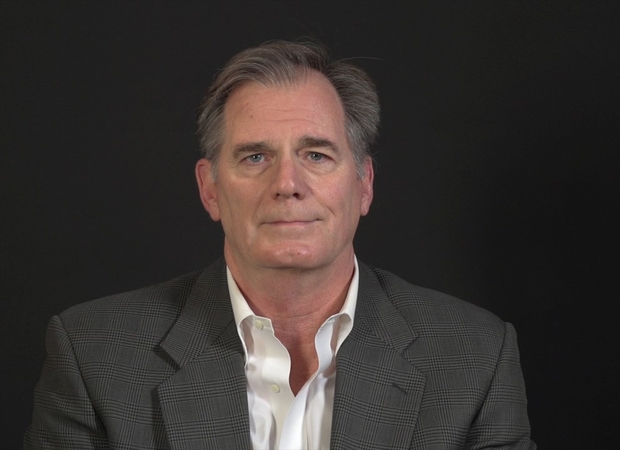
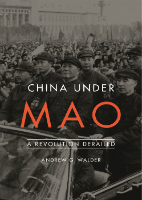
China Under Mao
China’s Communist Party seized power in 1949 after a long period of guerrilla insurgency followed by full-scale war, but the Chinese revolution was just beginning. China Under Mao narrates the rise and fall of the Maoist revolutionary state from 1949 to 1976—an epoch of startling accomplishments and disastrous failures, steered by many forces but dominated above all by Mao Zedong.Mao’s China, Andrew Walder argues, was defined by two distinctive institutions established during the first decade of Communist Party rule: a Party apparatus that exercised firm (sometimes harsh) discipline over its members and cadres; and a socialist economy modeled after the Soviet Union. Although a large national bureaucracy had oversight of this authoritarian system, Mao intervened strongly at every turn. The doctrines and political organization that produced Mao’s greatest achievements―victory in the civil war, the creation of China’s first unified modern state, a historic transformation of urban and rural life—also generated his worst failures: the industrial depression and rural famine of the Great Leap Forward and the violent destruction and stagnation of the Cultural Revolution.Misdiagnosing China’s problems as capitalist restoration and prescribing continuing class struggle against imaginary enemies as the solution, Mao ruined much of what he had built and created no viable alternative. At the time of his death, he left China backward and deeply divided.—Harvard University Press{chop}{node, 16186, 4}
Books
05.19.15
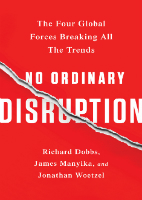
No Ordinary Disruption
Our intuition on how the world works could well be wrong. We are surprised when new competitors burst on the scene, or businesses protected by large and deep moats find their defenses easily breached, or vast new markets are conjured from nothing. Trend lines resemble saw-tooth mountain ridges.The world not only feels different. The data tell us it is different. Based on years of research by the directors of the McKinsey Global Institute, No Ordinary Disruption: The Four Forces Breaking All the Trends is a timely and important analysis of how we need to reset our intuition as a result of four forces colliding and transforming the global economy: the rise of emerging markets; the accelerating impact of technology on the natural forces of market competition; an aging world population; and accelerating flows of trade, capital, and people.Our intuitions formed during a uniquely benign period for the world economy—often termed the Great Moderation. Asset prices were rising, cost of capital was falling, labor and resources were abundant, and generation after generation was growing up more prosperous than their parents.But the Great Moderation has gone. The cost of capital may rise. The price of everything from grain to steel may become more volatile. The world’s labor force could shrink. Individuals, particularly those with low job skills, are at risk of growing up poorer than their parents.What sets No Ordinary Disruption apart is depth of analysis combined with lively writing informed by surprising, memorable insights that enable us to quickly grasp the disruptive forces at work. For evidence of the shift to emerging markets, consider the startling fact that, by 2025, a single regional city in China—Tianjin—will have a GDP equal to that of the Sweden, or that, in the decades ahead, half of the world’s economic growth will come from 440 cities including Kumasi in Ghana or Santa Carina in Brazil that most executives today would be hard-pressed to locate on a map.What we are now seeing is no ordinary disruption but the new facts of business life—facts that require executives and leaders at all levels to reset their operating assumptions and management intuition.—PublicAffairs{chop}
Books
05.05.15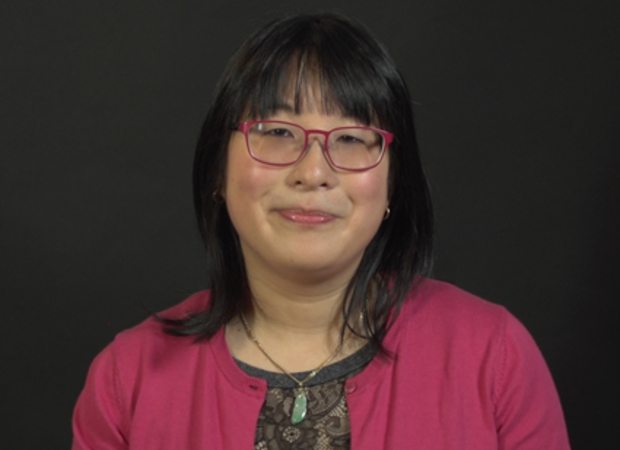
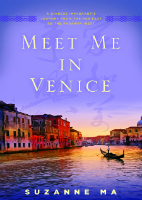
Meet Me in Venice
When Ye Pei dreamed of Venice as a girl, she imagined a magical floating city of canals and gondola rides. And she imagined her mother, successful in her new life and eager to embrace the daughter she had never forgotten. But when Ye Pei arrives in Italy, she learns her mother works on a farm far from the city. Her only connection, a mean-spirited Chinese auntie, puts Ye Pei to work in a small-town café. Rather than giving up and returning to China, a determined Ye Pei takes on a grueling schedule, resolving to save enough money to provide her family with a better future.{node, 15611}A groundbreaking work of journalism, Meet Me in Venice provides a personal, intimate account of Chinese individuals in the very act of migration. Suzanne Ma spent years in China and Europe to understand why Chinese people choose to immigrate to nations where they endure hardship, suspicion, manual labor, and separation from their loved ones. Today, all eyes are on China and its explosive economic growth. With the rise of the Chinese middle class, Chinese communities around the world are growing in size and prosperity, a development many westerners find unsettling and even threatening. Following Ye Pei’s undaunted path, this inspiring book is an engrossing read for those eager to understand contemporary China and the enormous impact of Chinese emigrants around the world. —Rowman & Littlefield{chop}
Books
04.30.15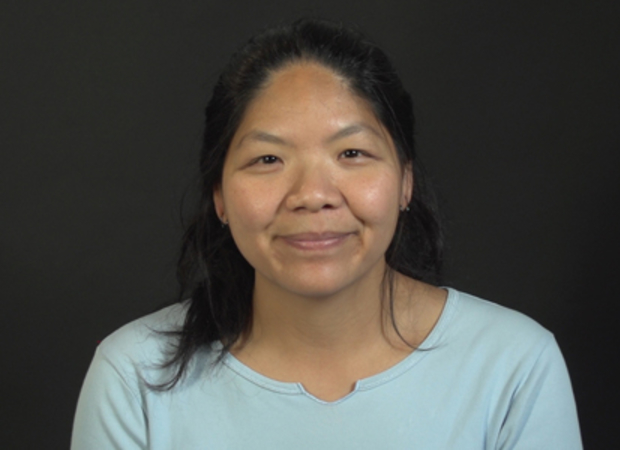
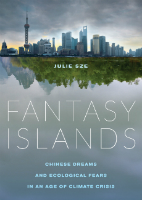
Fantasy Islands
The rise of China and its status as a leading global factory are altering the way people live and consume. At the same time, the world appears wary of the real costs involved. Fantasy Islands probes Chinese, European, and American eco-desire and eco-technological dreams, and examines the solutions they offer to environmental degradation in this age of global economic change.Uncovering the stories of sites in China, including the plan for a new eco-city called Dongtan on the island of Chongming, mega-suburbs, and the Shanghai World Expo, Julie Sze explores the flows, fears, and fantasies of Pacific Rim politics that shaped them. She charts how climate change discussions align with U.S. fears of China’s ascendancy and the related demise of the American Century, and she considers the motives of financial and political capital for eco-city and ecological development supported by elite power structures in the U.K. and China. Fantasy Islands shows how ineffectual these efforts are while challenging us to see what a true eco-city would be. —University of California Press{chop}
Books
04.23.15
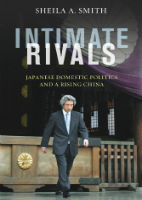
Intimate Rivals
No country feels China’s rise more deeply than Japan. Through intricate case studies of visits by Japanese politicians to the Yasukuni Shrine, conflicts over the boundaries of economic zones in the East China Sea, concerns about food safety, and strategies of island defense, Sheila A. Smith explores the policy issues testing the Japanese government as it tries to navigate its relationship with an advancing China.Smith finds that Japan’s interactions with China extend far beyond the negotiations between diplomats and include a broad array of social actors intent on influencing the Sino-Japanese relationship. Some of the tensions complicating Japan’s encounters with China, such as those surrounding the Yasukuni Shrine or territorial disputes, have deep roots in the postwar era, and political advocates seeking a stronger Japanese state organize themselves around these causes. Other tensions manifest themselves during the institutional and regulatory reform of maritime boundary and food safety issues.Smith scrutinizes the role of the Japanese government in coping with contention as China’s influence grows and Japanese citizens demand more protection. Underlying the government’s efforts is Japan’s insecurity about its own capacity for change and its waning status as the leading economy in Asia. For many, China’s rise means Japan’s decline, and Smith suggests how Japan can maintain its regional and global clout as confidence in its postwar diplomatic and security approach diminishes.—Columbia University Press{chop}
Books
04.09.15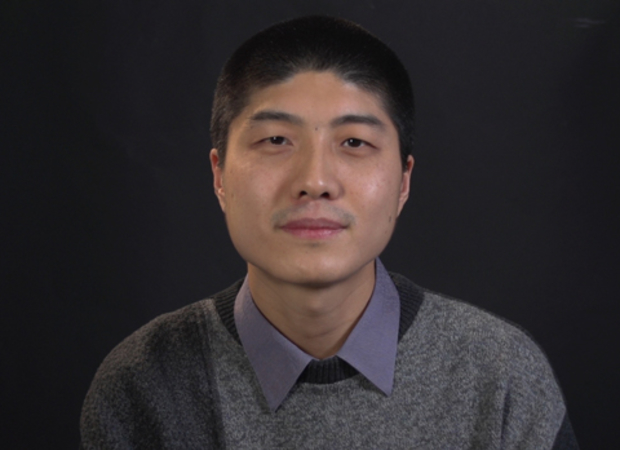
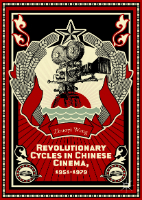
Revolutionary Cycles in Chinese Cinema, 1951-1979
A comprehensive history of how the conflicts and balances of power in the Maoist revolutionary campaigns from 1951 to 1979 complicated and diversified the meanings of films, this book offers a discursive study of the development of early PRC cinema. Wang closely investigates how film artists, Communist Party authorities, cultural bureaucrats, critics, and audiences negotiated, competed, and struggled with each other for the power to decide how to use films and how their extensively different, agonistic, and antagonistic power strategies created an ever-changing discursive network of meaning in cinema. —Palgrave Macmillan{chop}
Books
04.02.15
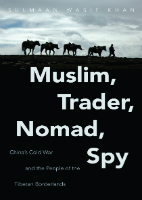
Muslim, Trader, Nomad, Spy
In 1959, the Dalai Lama fled Lhasa, leaving the People's Republic of China with a crisis on its Tibetan frontier. Sulmaan Wasif Khan tells the story of the PRC's response to that crisis and, in doing so, brings to life an extraordinary cast of characters: Chinese diplomats appalled by sky burials, Guomindang spies working with Tibetans in Nepal, traders carrying salt across the Himalayas, and Tibetan Muslims rioting in Lhasa. What Chinese policymakers confronted in Tibet, Khan argues, was not a "third world" but a "fourth world" problem: Beijing was dealing with peoples whose ways were defined by statelessness. As it sought to tighten control over the restive borderlands, Mao's China moved from a lighter hand to a harder, heavier imperial structure. That change triggered long-lasting shifts in Chinese foreign policy. Moving from capital cities to far-flung mountain villages, from top diplomats to nomads crossing disputed boundaries in search of pasture, this book shows Cold War China as it has never been seen before and reveals the deep influence of the Tibetan crisis on the political fabric of present-day China. —The University of North Carolina Press{chop}
Books
03.18.15
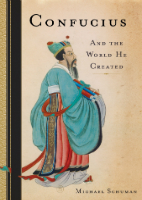
Confucius
Confucius is perhaps the most important philosopher in history. Today, his teachings shape the daily lives of more than 1.6 billion people. Throughout East Asia, Confucius’s influence can be seen in everything from business practices and family relationships to educational standards and government policies. Even as western ideas from Christianity to Communism have bombarded the region, Confucius’s doctrine has endured as the foundation of East Asian culture. It is impossible to understand East Asia, journalist Michael Schuman demonstrates, without first engaging with Confucius and his vast legacy.Confucius created a worldview that is in many respects distinct from, and in conflict with, Western culture. As Schuman shows, the way that East Asian companies are managed, how family members interact with each other, and how governments see their role in society all differ from the norm in the West due to Confucius’s lasting impact. Confucius has been credited with giving East Asia an advantage in today’s world, by instilling its people with a devotion to learning, and propelling the region’s economic progress. Still, the sage has also been highly controversial. For the past 100 years, East Asians have questioned if the region can become truly modern while Confucius remains so entrenched in society. He has been criticized for causing the inequality of women, promoting authoritarian regimes, and suppressing human rights.Despite these debates, East Asians today are turning to Confucius to help them solve the ills of modern life more than they have in a century. As a wealthy and increasingly powerful Asia rises on the world stage, Confucius, too, will command a more prominent place in global culture.Touching on philosophy, history, and current affairs, Confucius tells the vivid, dramatic story of the enigmatic philosopher whose ideas remain at the heart of East Asian civilization. —Basic Books {chop}
Books
03.16.15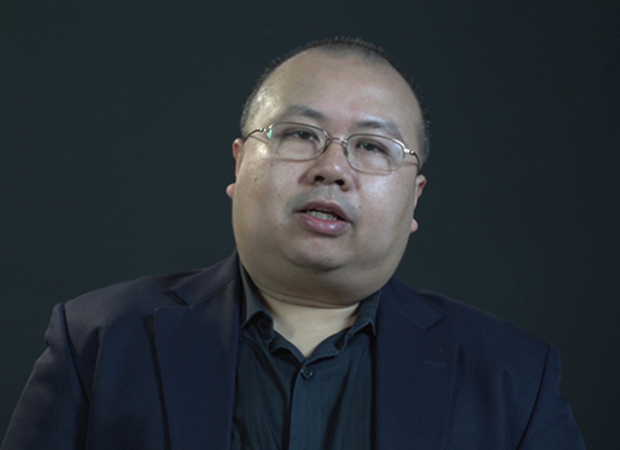
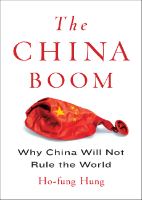
The China Boom
Many thought China’s rise would fundamentally remake the global order. Yet, much like other developing nations, the Chinese state now finds itself entrenched in a status quo characterized by free trade and American domination. Through a cutting-edge historical, sociological, and political analysis, Ho-fung Hung exposes the competing interests and economic realities that temper the dream of Chinese supremacy—forces that are stymieing growth throughout the global South. Hung focuses on four common misconceptions about China’s boom: that China could undermine orthodoxy by offering an alternative model of growth; that China is radically altering power relations between the East and the West; that China is capable of diminishing the global power of the United States; and that the Chinese economy would restore the world’s wealth after the 2008 financial crisis. His work reveals how much China depends on the existing order and how the interests of the Chinese elites maintain these ties. Through its perpetuation of the dollar standard and its addiction to U.S. Treasury bonds, China remains bound to the terms of its own prosperity, and its economic practices of exploiting debt bubbles are destined to fail. Dispelling many of the world’s fantasies and fears, Hung warns of a post-miracle China that will grow increasingly assertive in attitude while remaining constrained in capability. —Columbia University Press{chop}
Books
03.16.15
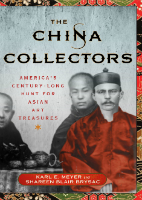
The China Collectors
Thanks to Salem sea captains, Gilded Age millionaires, curators on horseback, and missionaries gone native, North American museums now possess the greatest collections of Chinese art outside of East Asia itself. How did it happen? The China Collectors is the first full account of a century-long treasure hunt in China from the Opium Wars and the Boxer Rebellion to Mao Zedong's 1949 ascent.The principal gatherers are mostly little known and defy invention. They included "foreign devils" who braved desert sandstorms, bandits, and local warlords in acquiring significant works. Adventurous curators like Langdon Warner, a forebear of Indiana Jones, argued that the caves of Dunhuang were already threatened by vandals, thereby justifying the removal of frescoes and sculptures. Other Americans include George Kates, an alumnus of Harvard, Oxford, and Hollywood, who fell in love with Ming furniture. The Chinese were divided between dealers who profited from the artworks' removal, and scholars who sought to protect their country's patrimony. Duanfang, the greatest Chinese collector of his era, was beheaded in a coup and his splendid bronzes now adorn major museums. Others in this rich tapestry include Charles Lang Freer, an enlightened Detroit entrepreneur, two generations of Rockefellers, and Avery Brundage, the imperious Olympian, and Arthur Sackler, the grand acquisitor. No less important are two museum directors, Cleveland's Sherman Lee and Kansas City's Laurence Sickman, who challenged the East Coast's hegemony.Shareen Blair Brysac and Karl E. Meyer even-handedly consider whether ancient treasures were looted or salvaged, and whether it was morally acceptable to spirit hitherto inaccessible objects westward, where they could be studied and preserved by trained museum personnel. And how should the U.S. and Canada and their museums respond now that China has the means and will to reclaim its missing patrimony?—Palgrave Macmillan {chop}
Books
03.05.15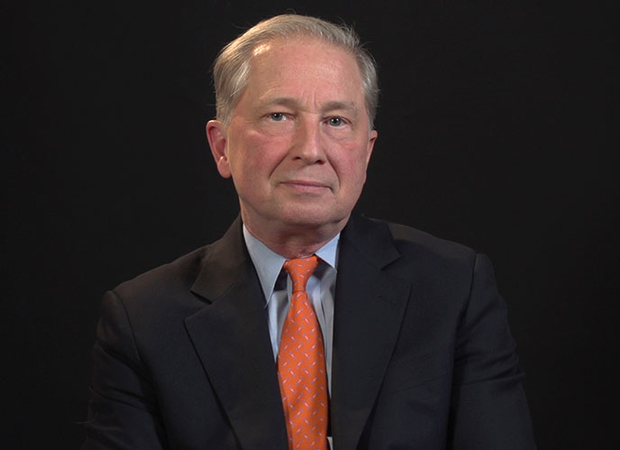
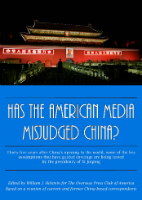
Has the American Media Misjudged China
Thirty-five years after China's opening to the world, some of the key assumptions that have guided coverage are being tested by the presidency of Xi Jinping. This book is must reading for anyone involved in U.S.-Chinese relations or for anyone who is just plain curious about how the assumptions that have guided American media coverage of China are now being challenged by the presidency of Xi Jinping. He has a very different vision of his country's future than the one often presented in some media accounts. —William J. Holstein {chop}
Books
02.25.15
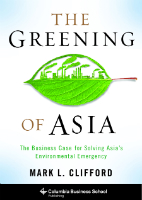
The Greening of Asia
One of Asia's best-respected writers on business and economy, Hong Kong-based author Mark L. Clifford provides a behind-the-scenes look at what companies in China, India, Japan, Korea, the Philippines, South Korea, Singapore, and Thailand are doing to build businesses that will lessen the environmental impact of Asia's extraordinary economic growth. Dirty air, foul water, and hellishly overcrowded cities are threatening to choke the region's impressive prosperity. Recognizing a business opportunity in solving social problems, Asian businesses have developed innovative responses to the region's environmental crises.{node, 13216}From solar and wind power technologies to green buildings, electric cars, water services, and sustainable tropical forestry, Asian corporations are upending old business models in their home countries and throughout the world. Companies have the money, the technology, and the people to act—yet, as Clifford emphasizes, support from the government (in the form of more effective, market-friendly policies) and the engagement of civil society are crucial for a region-wide shift to greener business practices. Clifford paints detailed profiles of what some of these companies are doing and includes a unique appendix that encapsulates the environmental business practices of more than fifty companies mentioned in the book. —Columbia Business School Publishing {chop}
Books
02.10.15
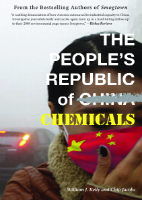
The People’s Republic of Chemicals
Maverick environmental writers William J. Kelly and Chip Jacobs follow up their acclaimed Smogtown with a provocative examination of China’s ecological calamity already imperiling a warming planet. Toxic smog most people figured was obsolete needlessly kills as many as died in the 9/11 attacks every day, while sometimes Grand Canyon-sized drifts of industrial particles aloft on the winds rain down ozone and waterway-poisoning mercury in America.In vivid, gonzo prose blending first-person reportage with exhaustive research and a sense of karma, Kelly and Jacobs describe China’s ancient love affair with coal, Bill Clinton’s blunders cutting free-trade deals enabling the U.S. to "export" manufacturing emissions to Asia in a shift that pilloried the West's middle class, Communist Party manipulation of eco-statistics, the horror of cancer villages, the deception of the 2008 Beijing Olympics, and spellbinding peasant revolts against cancer-spreading plants involving thousands in mostly-censored melées. Ending with China’s monumental coal-bases decried by climatologists as a global warming dagger, The People's Republic of Chemicals names names and emphasizes humanity over bloodless statistics in a classic sure to ruffle feathers as an indictment of money as the real green that not even Al Gore can deny. —Rare Bird Books, A Vireo Book {chop}Related ReadingWall Street Journal China Real Time interview with Chip Jacobs (December 6, 2014)
Books
02.10.15

Buried Ideas
The discovery of previously unknown philosophical texts from the Axial Age is revolutionizing our understanding of Chinese intellectual history. Buried Ideas presents and discusses four texts found on brush-written slips of bamboo and their seemingly unprecedented political philosophy. Written in the regional script of Chu during the Warring States period (475–221 BCE), all of the works discuss Yao’s abdication to Shun and are related to but differ significantly from the core texts of the classical period, such as the Mencius and Zhuangzi. Notably, these works evince an unusually meritocratic stance, and two even advocate abdication over hereditary succession as a political ideal. Sarah Allan includes full English translations and her own modern-character editions of the four works examined: Tang Yú zhi dao, Zigao, Rongchengshi, and Bao xun. In addition, she provides an introduction to Chu-script bamboo-slip manuscripts and the complex issues inherent in deciphering them. —SUNY Press{chop}
Books
12.23.14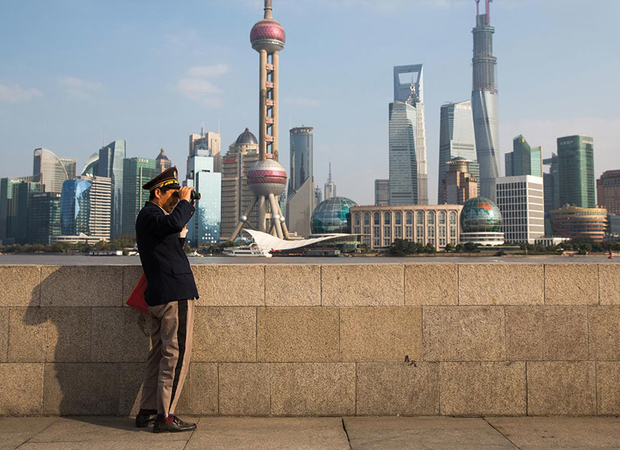
Top Five China Books of 2014
As the editor of ChinaFile’s Books section, I have the privilege of meeting and interviewing some amazing writers covering China today—academics, journalists, scholars, activists. Based on these conversations, we create short videos of the...
Books
11.12.14
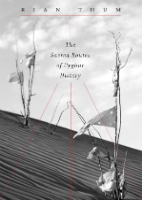
The Sacred Routes of Uyghur History
For 250 years, the Turkic Muslims of Altishahr—the vast desert region to the northwest of Tibet—have led an uneasy existence under Chinese rule. Today they call themselves Uyghurs, and they have cultivated a sense of history and identity that challenges Beijing’s official national narrative. Rian Thum argues that the roots of this history run deeper than recent conflicts, to a time when manuscripts and pilgrimage dominated understandings of the past. Beyond broadening our knowledge of tensions between the Uyghurs and the Chinese government, this meditation on the very concept of history probes the limits of human interaction with the past.Uyghur historical practice emerged from the circulation of books and people during the Qing Dynasty, when crowds of pilgrims listened to history readings at the tombs of Islamic saints. Over time, amid long journeys and moving rituals, at oasis markets and desert shrines, ordinary readers adapted community-authored manuscripts to their own needs. In the process they created a window into a forgotten Islam, shaped by the veneration of local saints.Partly insulated from the rest of the Islamic world, the Uyghurs constructed a local history that is at once unique and assimilates elements of Semitic, Iranic, Turkic, and Indic traditions—the cultural imports of Silk Road travelers. Through both ethnographic and historical analysis, The Sacred Routes of Uyghur History offers a new understanding of Uyghur historical practices, detailing the remarkable means by which this people reckons with its past and confronts its nationalist aspirations in the present day. —Harvard University Press {chop}
Books
11.05.14
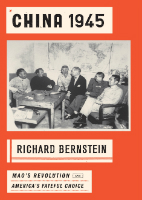
China 1945
A riveting account of the watershed moment in America’s dealings with China that forever altered the course of East-West relations.As 1945 opened, America was on surprisingly congenial terms with China’s Communist rebels—their soldiers treated their American counterparts as heroes, rescuing airmen shot down over enemy territory. Chinese leaders talked of a future in which American money and technology would help lift China out of poverty. Mao Zedong himself held friendly meetings with U.S. emissaries, vowing to them his intention of establishing an American-style democracy in China.By year’s end, however, cordiality had been replaced by chilly hostility and distrust. Chinese Communist soldiers were setting ambushes for American marines in north China; Communist newspapers were portraying the United States as an implacable imperialist enemy; civil war in China was erupting. The pattern was set for a quarter century of almost total Sino-American mistrust, with the devastating wars in Korea and Vietnam among the consequences.Richard Bernstein here tells the incredible story of that year’s sea change, brilliantly analyzing its many components, from ferocious infighting among U.S. diplomats, military leaders, and opinion makers to the complex relations between Mao and his patron, Stalin.On the American side, we meet experienced “China hands” John Paton Davies and John Stewart Service, whose efforts at negotiation made them prey to accusations of Communist sympathy; FDR’s special ambassador Patrick J. Hurley, a decorated general and self-proclaimed cowboy; and Time journalist, Henry Luce, whose editorials helped turn the tide of American public opinion. On the Chinese side, Bernstein reveals the ascendant Mao and his intractable counterpart, Nationalist leader Chiang Kai-shek; and the indispensable Zhou Enlai.A tour de force of narrative history, China 1945 examines the first episode in which American power and good intentions came face-to-face with a powerful Asian revolutionary movement, and challenges familiar assumptions about the origins of modern Sino-American relations. —Knopf {chop}
Books
10.21.14
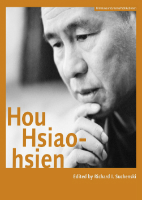
Hou Hsiao-hsien
For younger critics and audiences, Taiwanese cinema enjoys a special status, comparable with that of Italian Neorealism and the French New Wave for earlier generations, a cinema that was and is in the midst of introducing an innovative sensibility and a fresh perspective. Hou Hsiao-hsien is the most important Taiwanese filmmaker working today, and his sensuous, richly nuanced films reflect everything that is vigorous and genuine in contemporary film culture. By combining multiple forms of tradition with a uniquely cinematic approach to space and time, Hou has created a body of work that, through its stylistic originality and historical gravity, opens up new possibilities for the medium. This new volume includes contributions by Olivier Assayas, Peggy Chiao, Chung Mong-hong, Jean-Michel Frodon, Hasumi Shigehiko, Ichiyama Shōzō, Jia Zhang-ke, Kent Jones, Koreeda Hirokazu, Jean Ma, Ni Zhen, Abé Mark Nornes, James Quandt, Richard I. Suchenski, James Udden, and Wen Tien-hsiang, as well as conversations with Hou Hsiao-hsien and some of his most important collaborators over the decades. —Columbia University Press {chop}
Books
10.15.14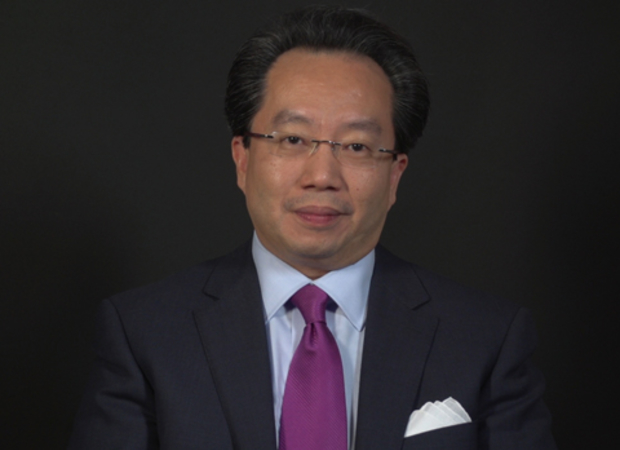
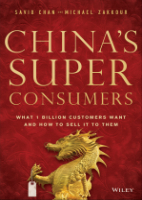
China’s Super Consumers
China has transformed itself from a feudal economy in the 19th century, to Mao and Communism in the 20th century, to the largest consumer market in the world by the early 21st century. China's Super Consumers explores the extraordinary birth of consumerism in China and explains who these super consumers are. China's Super Consumers offers an in-depth explanation of what's inside the minds of Chinese consumers and explores what they buy, where they buy, how they buy, and most importantly why they buy.The book is filled with real-world stories of the foreign and domestic companies, leading brands, and top executives who have succeeded in selling to this burgeoning marketplace. This remarkable book also takes you inside the boardrooms of the people who understand Chinese consumers and have had success in the Chinese market.A hands-on resource for succeeding in the Chinese marketplaceFilled with real-world stories of companies who have made an impact in ChinaDiscover what the Chinese consumer wants and how to deliver the goodsThis book is an invaluable resource for anyone who wants a clear understanding of how China's Super Consumers are changing the world and how to sell to them. —Wiley {chop}
Books
09.24.14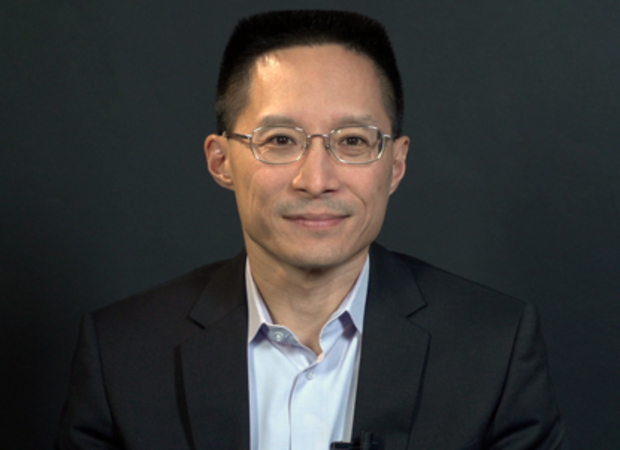
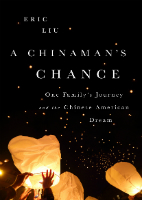
A Chinaman’s Chance
From Tony Hsieh to Amy Chua to Jeremy Lin, Chinese Americans are now arriving at the highest levels of American business, civic life, and culture. But what makes this story of immigrant ascent unique is that Chinese Americans are emerging at just the same moment when China has emerged—and indeed may displace America—at the center of the global scene. What does it mean to be Chinese American in this moment? And how does exploring that question alter our notions of just what an American is and will be? In many ways, Chinese Americans today are exemplars of the American Dream: during a crowded century and a half, this community has gone from indentured servitude, second-class status and outright exclusion to economic and social integration and achievement. But this narrative obscures too much: the Chinese Americans still left behind, the erosion of the American Dream in general, the emergence—perhaps—of a Chinese Dream, and how other Americans will look at their countrymen of Chinese descent if China and America ever become adversaries. As Chinese Americans reconcile competing beliefs about what constitutes success, virtue, power, and purpose, they hold a mirror up to their country in a time of deep flux. In searching, often personal essays that range from the meaning of Confucius to the role of Chinese Americans in shaping how we read the Constitution to why he hates the hyphen in "Chinese-American," Eric Liu pieces together a sense of the Chinese American identity in these auspicious years for both countries. He considers his own public career in American media and government; his daughter's efforts to hold and release aspects of her Chinese inheritance; and the still-recent history that made anyone Chinese in America seem foreign and disloyal until proven otherwise. Provocative, often playful but always thoughtful, Liu breaks down his vast subject into bite-sized chunks, along the way providing insights into universal matters: identity, nationalism, family, and more. —PublicAffairs {chop}
Books
09.11.14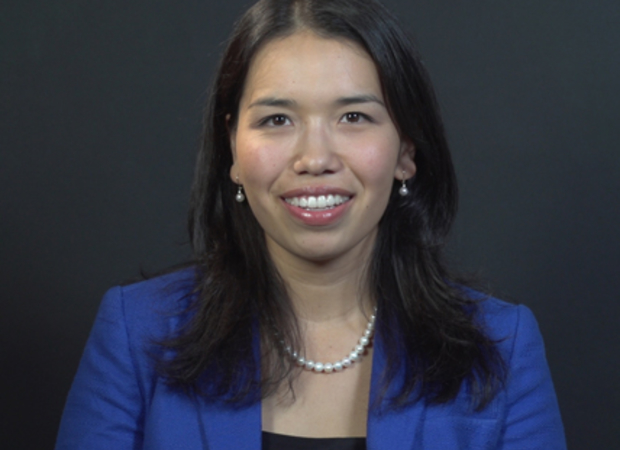
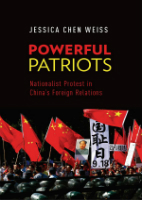
Powerful Patriots
Why has the Chinese government sometimes allowed and sometimes repressed nationalist, anti-foreign protests? What have been the international consequences of these choices? Anti-American demonstrations were permitted in 1999 but repressed in 2001 during two crises in U.S.-China relations. Anti-Japanese protests were tolerated in 1985, 2005, and 2012 but banned in 1990 and 1996. Protests over Taiwan, the issue of greatest concern to Chinese nationalists, have never been allowed. To explain this variation in China's response to nationalist mobilization, Powerful Patriots argues that Chinese and other authoritarian leaders weigh both diplomatic and domestic incentives to allow and repress nationalist protests. Autocrats may not face electoral constraints, but anti-foreign protests provide an alternative mechanism by which authoritarian leaders can reveal their vulnerability to public pressure. Because nationalist protests are costly to repress and may turn against the government, allowing protests demonstrates resolve and increases the domestic cost of diplomatic concessions. Repressing protests, by contrast, sends a credible signal of reassurance, facilitating diplomatic flexibility and signaling a willingness to spend domestic political capital for the sake of international cooperation. To illustrate the logic, the book traces the effect of domestic and diplomatic factors in China's management of nationalist protest in the post-Mao era (1978-2012) and the consequences for China's foreign relations.—Oxford University Press {chop}
Books
09.02.14
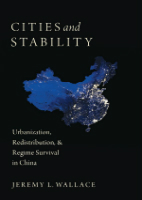
Cities and Stability
China's management of urbanization is an under-appreciated factor in the regime's longevity. The Chinese Communist Party fears "Latin Americanization"—the emergence of highly unequal megacities with their attendant slums and social unrest. Such cities threaten the survival of nondemocratic regimes. To combat the threat, many regimes, including China's, favor cities in policymaking. Cities and Stability shows this "urban bias" to be a Faustian Bargain: cities may be stabilized for a time, but the massive in-migration from the countryside that results can generate the conditions for political upheaval. Through its hukou system of internal migration restrictions, China has avoided this dilemma, simultaneously aiding urbanites and keeping farmers in the countryside. The system helped prevent social upheaval even during the Great Recession, when tens of millions of laid-off migrant workers dispersed from coastal cities. Jeremy Wallace's powerful account forces us to rethink the relationship between cities and political stability throughout the developing world. —Oxford University Press {chop}
Books
08.06.14
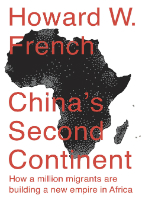
China’s Second Continent
An exciting, hugely revealing account of China’s burgeoning presence in Africa—a developing empire already shaping, and reshaping, the future of millions of people. A prizewinning foreign correspondent and former New York Times bureau chief in Shanghai and in West and Central Africa, Howard French is uniquely positioned to tell the story of China in Africa. Through meticulous on-the-ground reporting—conducted in Mandarin, French, and Portuguese, among other languages—Howard French crafts a layered investigation of astonishing depth and breadth as he engages not only with policy-shaping moguls and diplomats, but also with the ordinary men and women navigating the street-level realities of cooperation, prejudice, corruption, and opportunity forged by this seismic geopolitical development. With incisiveness and empathy, French reveals the human face of China’s economic, political, and human presence across the African continent—and in doing so reveals what is at stake for everyone involved.We meet a broad spectrum of China’s dogged emigrant population, from those singlehandedly reshaping African infrastructure, commerce, and even environment (a self-made tycoon who harnessed Zambia’s now-booming copper trade; a timber entrepreneur determined to harvest the entirety of Liberia’s old-growth redwoods), to those just barely scraping by (a sibling pair running small businesses despite total illiteracy; a karaoke bar owner–cum–brothel madam), still convinced that Africa affords them better opportunities than their homeland. And we encounter an equally panoramic array of African responses: a citizens’ backlash in Senegal against a “Trojan horse” Chinese construction project (a tower complex to be built over a beloved soccer field, which locals thought would lead to overbearing Chinese pressure on their economy); a Zambian political candidate who, having protested China’s intrusiveness during the previous election and lost, now turns accommodating; the ascendant middle class of an industrial boomtown; African mine workers bitterly condemning their foreign employers, citing inadequate safety precautions and wages a fraction of their immigrant counterparts’.French’s nuanced portraits reveal the paradigms forming around this new world order, from the all-too-familiar echoes of colonial ambition—exploitation of resources and labor; cut-rate infrastructure projects; dubious treaties—to new frontiers of cultural and economic exchange, where dichotomies of suspicion and trust, assimilation and isolation, idealism and disillusionment are in dynamic flux.Part intrepid travelogue, part cultural census, part industrial and political exposé, French’s keenly observed account ultimately offers a fresh perspective on the most pressing unknowns of modern Sino-African relations: why China is making the incursions it is, just how extensive its cultural and economic inroads are, what Africa’s role in the equation is, and just what the ramifications for both parties—and the watching world—will be in the foreseeable future. —Knopf {chop}
Books
07.31.14
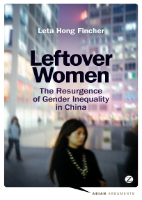
Leftover Women
A century ago, Chinese feminists fighting for the emancipation of women helped spark the Republican Revolution, which overthrew the Qing empire. After China's Communist revolution of 1949, Chairman Mao famously proclaimed that "women hold up half the sky." In the early years of the People's Republic, the Communist Party sought to transform gender relations with expansive initiatives such as assigning urban women jobs in the planned economy. Yet those gains are now being eroded in China's post-socialist era. Contrary to many claims made in the mainstream media, women in China have experienced a dramatic rollback of many rights and gains relative to men.Leftover Women debunks the popular myth that women have fared well as a result of post-socialist China's economic reforms and breakneck growth. Laying out the structural discrimination against women in China will speak to broader problems with China's economy, politics, and development.—Zed Books {chop}



